DOCUMENT 1
FOI 24/25-0141
Below are all questions and responses from the
“Personal and environmental circumstances case” in
PACE for all age groups:
Date : 2 September 2024
0 - 6 AGE Group
Category
Questions
Responses
N/A
Do you wish to select an
Yes, Select Authorised representative
authorised representative?
No
Housing
What are this person's current
• Private home: owned by self/family
housing arrangements?
• Private home: rented from private landlord
• Private home: rented from public authority
• Aboriginal or Torres Strait Islander
community residence
• Short-term crisis
• Other, please specify:
Housing
Are the child's living
•
Yes
arrangements expected to
•
No, not fully accessible
remain the same for the next
•
No, not a permanent option (e.g. in hospital)
12 months?
•
No, planning to move house
•
No, other. Please specify. Free text
Housing
Who does the person
•
With both parents
currently live with?
•
Parents separated, time spent in both
homes
•
One parent only
•
Other family
•
With approved foster carer (Legally
appointed guardian)
•
Voluntary Out of Home Care
•
Other – please specify (Free text)
Daily Support How many days a week is the
• 1
child in an early childhood
• 2
education and care or school
• 3
setting?
• 4
• 5
Daily Support Will the number of days the
• No, stay the same
child attends an early
• Yes, - Please select below days/Start date
childhood education and care
o 0 days a week
or school setting change in
o 1 days a week
the next 12 months?
o 2 days a week
o 3 days a week
Page 1 of 68
FOI 24/25-0141
o 4 days a week
o 5 days a week
o Start Date: Date field
• Comments – comments (free text)
Daily Support Will the child transition to an
• Yes
early childhood education
• No
and care setting or school in
• Unsure/ unanswered
the next 12 months?
Daily Support Are there identified barriers to
• Yes
participation in an early
• No
childhood education and care
or school setting, because of
the child’s developmental
delay or disability?
Daily Support Is there any mainstream
• Yes
funding for inclusion or
• No
disability support the child is
eligible for?
Carers
Does the child’s
• Yes
developmental delay or
• No
disability impact on the ability
• Unsure/ unanswered
of the extended family, friends
or a typical babysitter to
provide care?
Carers
After considering informal,
• Yes
community and mainstream
• No
supports, does the family or
• If Yes, Select the option that best describes
carer require NDIS funded
the person with disability's use.
supports to sustain their
• If Yes, Daily Routine (Please specify): Free
caring role, because of the
text
child’s developmental delay
•
or disability?
Carers
Select the option that best
• to help with the child's daily routines, such
describes the person with
as completing personal care
disability's use.
o Daily Routine (Please specify):
• to have time to attend to daily tasks
o Daily Tasks (Please specify):
• to attend to other responsibilities, such as
sibling needs
o Other responsibilities (Please
specify):
• to have a break from caring for the
participant
o Break from caring (Please specify):
Carers
Indicate the significant
• Monday
pressure points and daily
• Tuesday
routines in the week where
• Wednesday
NDIS funding is required to
• Thursday
sustain informal supports
• Friday
• Saturday
Page 2 of 68
FOI 24/25-0141
• Sunday
• Other,
o Please specify (free text)
o Please specify Other hours (free text)
Carers
On average, how many hours
• Free text
per week of NDIS funded
support is required to sustain
informal supports?
Carers
Does this person require Daily
• Auslan language development
Living support in one or more
• Auslan interpreting
of the following areas?
• specialised school transport
• personal care in schools
• specialised swimming lessons for water
safety due disability or high risk
• Other,
o Please specify (free text)
• Not applicable
Carers
Does the person require
• Participant does not require assistance when
assistance with choosing and
choosing and managing supports
managing supports in their
• Participant does not require assistance when
plan?
choosing and managing supports
• Participant does not have assistance but
requires it when choosing and managing
supports
Carers
(Do not read the response
•
Yes, living in remote community, please
options to the participant/
specify (free text)
respondent.) Is funding for
•
Yes, multiple complexities in their
support coordination
circumstances, please specify (free text)
required?
•
Yes, requires significant support to engage
with the NDIS, please specify, (free text)
•
No
Carers
(Do not read the response
•
more than 9 hours per month = Support
options to the participant/
Coordination - Level 1a
respondent.) What level of
•
6-9 hours per month = Support Coordination
support coordination is
- Level 1b
required?
•
4-6 hours per month = Support Coordination
- Level 1c
•
2-4 hours per month = Support Coordination
- Level 2
•
1-2 hours per month = Support Coordination
- Level 3
•
up to 1 hour per month = Support
Coordination - Level 4
•
connection and monitoring = Support
Coordination - Level 5
•
connection only = Support Coordination -
Level 6
Page 3 of 68
FOI 24/25-0141
Capacity
For each developmental area
•
Cognitive (picklist)
Building
below, what level of early
o High, please describe (free text)
childhood supports (capacity
o medium to low, please describe (free
building) are needed to build
text)
capacity of the child and
o n/a
family?
•
Social skills (picklist)
o High, please describe (free text)
o medium to low, please describe (free
text)
o n/a.
•
Self-care skills (picklist)
o High, please describe (free text)
o medium to low, please describe (free
text)
o n/a.
•
Language and communication (picklist)
o High, please describe (free text)
o medium to low, please describe (free
text)
o n/a.
•
Emotional development (picklist)
o High, please describe (free text)
o medium to low, please describe (free
text)
o n/a.
•
Physical development (picklist)
o High, please describe (free text)
o medium to low, please describe (free
text)
o n/a.
•
Vision (picklist)
o High, please describe (free text)
o medium to low, please describe (free
text)
o n/a.
•
Hearing (picklist)
o High, please describe (free text)
o medium to low, please describe (free
text)
o n/a.
Capacity
Has the need for intensive
•
Yes (upload evidence)
Building
early childhood supports
•
No
been identified?
•
Unsure/Unanswered
Capacity
Who has recommended
Please specify (free text)
Building
intensive early childhood
supports? please specify:
Page 4 of 68
FOI 24/25-0141
Capacity
Does the parent or carer agree
•
Yes
Building
to the inclusion of intensive
•
No
early childhood supports?
•
Unsure/unanswered
Capacity
Is an additional level of early
•
Yes, please specify (free text)
Building
childhood supports required
•
No
to share strategies in
•
Unsure/unanswered
mainstream settings?
Capacity
Does this person need
• Dysphagia supports, please specify (free
Building
support to improve their
text) Upload documents
health and wellbeing?
• oral eating drinking care plan, please specify
(free text) Upload documents
• nutrition supports, please specify (free text)
Upload documents
• delegation of care/nursing supports, please
specify (free text) Upload documents
• podiatry, please specify (free text) Upload
documents
• diabetes, please specify (free text) Upload
documents
• epilepsy, please specify (free text) Upload
documents
• respiratory, please specify (free text) Upload
documents
• other, please specify (free text) Upload
documents
• Not Applicable, please specify (free text)
Upload documents
Capacity
Are regulated restrictive
Building
practices in use (or likely to be
• No
in use)?
• Yes (Multi-select)
o Chemical, please specify (free text)
o Environmental, please specify (free
text)
o Physical, please specify (free text)
o Seclusion, please specify (free text)
o Mechanical, please specify (free text)
•
Unsure/unanswered
Capacity
Does the child have a newly
•
Yes
Building
diagnosed permanent hearing
•
No
loss OR are they at a high risk
•
Unsure/unanswered
of auditory/language
deprivation related to
significantly delayed
diagnosis of a hearing loss?
Capacity
Does the child have a
• Unilateral
Building
confirmed unilateral or
• Bilateral
bilateral hearing loss?
• Unsure/Unanswered
Page 5 of 68
FOI 24/25-0141
Capacity
What is the child’s confirmed
• Mild,
Building
level of hearing loss in the
• Moderate,
poorer ear?
• Severe,
• Profound,
• Auditory Neuropathy Spectrum Disorder
(ANSD)
Equipment
Are there rooms or parts of
• Yes (multiselect)
and
the house that limit the
o Bathroom
Consumables person's day to day activities,
o Internal access
compared to their peers?
o Unsure/Unanswered
o External access
o Kitchen
o Living areas
o Bedroom
o Other, Please specify Free text
• No
• Unsure/Unanswered
Equipment
Does this person have any
• Yes (multi-select)
and
home modification needs?
o Bathroom
Consumables
o Kitchen
o External Access
o Bedroom
o Living areas
o Other, Please specify: Free text
• No
• Unsure/Unanswered
Equipment
Does the child or person
• Yes
and
require any new equipment?
• No
Consumables
• Unsure/Unanswered
Equipment
Are mid to high cost assistive
• Yes (multi-select)
and
technology supports required
o Bathing, showering and toileting,
Consumables or likely to be required in the
please specify (free text) + upload
next 12 months?
information
o Mobility, please specify (free text) +
upload information
o Positioning, please specify (free text)
+ upload information
o Recreation, please specify (free text)
+ upload information
o Seating, please specify (free text) +
upload information
o Sleeping, please specify (free text) +
upload information
o Standing, please specify (free text) +
upload information
o Communication, please specify (free
text) + upload information
o Transfers, please specify (free text) +
upload information
o Vision, please specify (free text) +
upload information
Page 6 of 68
FOI 24/25-0141
o Orthotics, please specify (free text) +
upload information
o Other, please specify (free text) +
upload information
• No
Equipment
Are low cost assistive
• Yes (multi-select)
and
technology supports currently
o Bathing, showering and toileting,
Consumables required or likely to be
please specify (free text) + upload
required in the next 12
information
months?
o Mobility, please specify (free text) +
upload information
o Positioning, please specify (free text)
+ upload information
o Recreation, please specify (free text)
+ upload information
o Seating, please specify (free text) +
upload information
o Sleeping, please specify (free text) +
upload information
o Standing, please specify (free text) +
upload information
o Communication, please specify (free
text) + upload information
o Transfers, please specify (free text) +
upload information
o Vision, please specify (free text) +
upload information
o Orthotics, please specify (free text) +
upload information
o Other, please specify (free text) +
upload information
• No
Equipment
Is NDIS funding required for
• Yes (multi-select)
and
the following?
o Repairs, please specify (free text)
Consumables
o Maintenance, please specify (free
text)
o Rental, please specify (free text)
o trial, please specify (free text)
• No
• Unsure/unanswered
Equipment
Is NDIS funding required to
• Yes (multi-select)
and
assess, find and set up
o Bathing, showering and toileting,
Consumables assistive technology
please specify (free text) + upload
supports?
information
o Mobility, please specify (free text) +
upload information
o Positioning, please specify (free text)
+ upload information
Page 7 of 68
FOI 24/25-0141
o Recreation, please specify (free text)
+ upload information
o Sitting, please specify (free text) +
upload information
o Sleeping, please specify (free text) +
upload information
o Standing, please specify (free text) +
upload information
o Communication, please specify (free
text) + upload information
o Transfers, please specify (free text) +
upload information
o Other, please specify (free text) +
upload information
•
No/Not Applicable
Equipment
Does the child need any
•
Yes (multi-select)
and
consumable products or
o continence
, please specify (free text),
Consumables supports because of their
upload information
developmental delay or
1-3 nappies per 24 hours
disability?
4-5 nappies per 24 hours
6-11 nappies per 24 hours
12 or more nappies per 24
hours
Other – free text box
Continence assessment (if
continence supports are
required drop down options):
Child between 5-7
years
Child with
fluctuating/complex
needs
o PEG, please specify (free text),
upload information
o nasogastric tube, please specify (free
text), upload information
o total parenteral nutrition, please
specify (free text), upload information
o maintenance fee for Hearing
Australia, please specify (free text),
upload information
o Assessment required, please specify
(free text), upload information
o other, please specify (free text),
upload information
•
No support required
Page 8 of 68
FOI 24/25-0141
7 - 14 AGE Group
Category
Questions
Responses
N/A
Do you wish to select an
Yes, Select Authorised representative
authorised representative?
No
Housing
Who does the person
Which values are correct?
currently live with?
Staging values
• One parent only
• Other family
• Parents separated, time spent in both homes
• Voluntary out of home care
• With approved foster carer (Legally
appointed guardian)
• With both parents
• Other, Please specify: Free text
Housing
What are this person's current
Private home: owned by self/family
housing arrangements?
Private home: rented from private landlord
Private home: rented from public authority
Large residential (20+ people)
Small residential (<20 people)
Aboriginal or Torres Strait Islander
community residence
Supported accommodation
Short-term crisis
Temporary shelter (homeless)
Other, please specify:
Housing
Are there rooms or parts of the
• Yes
house that limit the person's
• No
day to day activities,
• Unsure/Unanswered
compared to their peers?
Housing
Which room limits the
• Bathroom
person's daily activities most?
• Kitchen
• External access
• Internal access
• Unsure/Unanswered
Daily Support Are there any concerns with
• Yes developmental concerns
this person's ability to
• No developmental concerns
undertake self-care activities?
• Unsure/Unanswered
Daily Support Does this person require Daily (Multi-select)
Living support in one or more
• Assistance in shared living
of the following areas?
• AUSLAN Lessons
• Community access
• Group activity
• Host / alternative family situation
• Household assistance
Page 9 of 68
FOI 24/25-0141
• Informal support available
• Interpreting and translating
• Live in carer
• Personal care
• Referral to mainstream service
• Short term accommodation
• Support to sustain informal care
• Supported living - single person
• Transport assistance
• Vacation care
• Epilepsy or Seizure
• 24 hour care support on request
• Not Applicable
• Auslan interpreting
• Continence aids
• personal care in schools
• specialised school transport
• Auslan language development
• specialised swimming lessons for water
safety due to disability or high risk
Capacity
Does the person require
Participant does not require assistance
Building
assistance with choosing and
when choosing and managing supports
managing supports in their
Participant has assistance when choosing
plan?
and managing supports
Participant does not have assistance but
requires it when choosing and managing
supports
Capacity
(Do not read the response
Yes - more than 9 hours per month = Support
Building
options to the participant/
Coordination - Level 1a
respondent.) Is funding for
Yes - 6-9 hours per month = Support
support coordination
Coordination - Level 1b
required?
Yes - 4-6 hours per month = Support
Coordination - Level 1c
Yes - 2-4 hours per month = Support
Coordination - Level 2
Yes - 1-2 hours per month = Support
Coordination - Level 3
Yes - up to 1 hour per month = Support
Coordination - Level 4
Yes - connection and monitoring = Support
Coordination - Level 5
Yes - connection only = Support
Coordination - Level 6
No = Support Coordination - Level 7
Unsure/Blank = Support Coordination - Level
7
Yes = 100 hours per year = Recovery Coach -
Level 1
Page 10 of 68
FOI 24/25-0141
Yes = 50 hours per year = Recovery Coach -
Level 2
Yes = 30 hours per year = Recovery Coach -
Level 3
Capacity
What level of capacity building
Very high = Capacity Building Level 1
Building
is required?
High = Capacity Building Level 2
Moderate = Capacity Building Level 3
Low = Capacity Building Level 4
None = Capacity Building Level 5
Unsure/Unanswered = Capacity Building -
Level 5
Capacity
What level of capacity building
None
Building
is required to support goal
Low
achievement?
Moderate
High
Very high
Unsure/Unanswered
Capacity
Does this person need
Informal support available
Building
support to improve their
Referral to mainstream allied health
health and wellbeing?
Referral to mainstream service
Personal Training
Requires exercise physiology
Requires active overnight support
Other, please specify: Free text
Capacity
Does this person need
Assessment by a nurse
Building
support to improve their daily
Budgeting
living?
Daily Planning
Decision Making
Individual Assessment
Informal Support available
Multidisciplinary intervention
Mobility training
Referral to mainstream service
Specialist Driver training
Therapy assistant
Trans disciplinary therapy package
Therapy/Skills training
Travel training
Emotional development
Oral eating drinking care plan
Capacity
Is NDIS funding required to
Assessment required
Building
assess, find and set up
Referral to mainstream service
assistive technology
Therapy / skills training
supports?
No/Not Applicable
Capacity
[Not to be asked of the
• Yes
Building
participant] Are there any
• No
indicators of challenging
• Unsure/Unanswered
Page 11 of 68
FOI 24/25-0141
behaviour (e.g. verbal/
physical aggression;
inappropriate sexual or social
behaviour; lack of initiation)?
Capacity
My child is developing
Not very well
Building
functional, learning and
Pretty well
coping skills that are
Very well
appropriate to his/her ability
and circumstances
Capacity
Most of the time my child is
Not very well
Building
able to do tasks at home, at
Pretty well
school and in the community
Very well
that a child of the same age
would be expected to be able
to do ?
Capacity
Does this person need
Plan management provider
Building
support to improve their life
Specialist support coordination
choices?
Support connection
Support coordination
Recovery Coach
Capacity
Does this person need
Behavioural Intervention
Building
support to improve their
Behavioural Support
relationships?
Informal Support Available
Referral to Mainstream Counselling
Referral to Mainstream Service
Social Skills Development
Behaviours of concern - Kick, punch, throw
support
Behaviour of concern - higher risk
Breaking Point
Capacity
Does this person have a
Participant has a reliable support network
Building
support network of friends
who can provide additional support.
and family who are available
Participant is independent.
to assist them?
Participant does not have reliable support
network and would like some additional
informal supports to develop those networks
Participant does not have reliable support
network and does not want additional
informal supports to develop those networks
Capacity
Does this person need
Activity Costs
Building
support to improve their
Informal Support Available
Social/Community
Peer Support / Mentoring
participation?
Referral to Mainstream Service
Referral to Volunteer Work
Skills Development including group
Capacity
Is the Disability Stable?
• Yes
Building
• No
• Unsure/Unanswered
Page 12 of 68
FOI 24/25-0141
Capacity
Are there any major life
Yes in next 2 years
Building
transitions likely in the next 36
Yes in next 3 years
months that may significantly
No
impact support funding?
Capacity
Does this person need
Informal Support Available
Building
support to improve their living
Referral to Mainstream Service
arrangements?
Support to Locate Accommodation
Support to Maintain Tenancy
Support to Sustain Informal Care
Therapy / Skills training
Requires Respirator or Ventilator
Capacity
Has this person been actively
No and I don’t want to be
Building
involved in a community
No, but I would like to be
cultural or religious group in
Yes, a general community group
the last 12 months?
Yes, a group for people with a disability
Capacity
Does this person get support
• Yes
Building
for getting out of the house?
• No
• Unsure/Unanswered
Carers
Who provides primary care for
Parent/s (including step-parents)/ siblings
the child?
Shared care between separated parent/s
Grandparent/s
Other family
Out of home care
Other
Unsure/Unanswered
Carers
How much support is
provided to the child by the
All or most (~75%)
primary carer, other family,
About 50%
friends and/ or neighbours (ie
Some (~25%)
informal care)?
None (0%)
Unsure/Unanswered
Equipment
Does this person currently use
Child level 1 - high user only, or moderate
and
any consumable products
use and higher cost
Consumables (e.g. continence
Child level 2 - moderate use, moderate cost
products/aide, Home Enteral
Child level 3 - low to moderate use, low to
Nutrition or tube feeding for
moderate cost
getting your food)?
Child level 4 - low use, low cost
Child level 5 - none necessary
Equipment
Does this person currently use
• Yes
and
any equipment?
• No
Consumables
• Unsure/Unanswered
Equipment
Does the equipment require
• Yes
and
maintenance?
• No
Consumables
• Unsure/Unanswered
Equipment
Does this person require any
• Yes
and
new equipment?
• No
Consumables
• Unsure/Unanswered
Page 13 of 68
FOI 24/25-0141
[Do not read out options to
Car modification
person] Please select any high
Hoist
cost / quotable AT items that
Manual wheelchair
the person requires.
Mobile shower commode
Orthoses
Power Bed
Powered wheelchair
Pressure care cushion
Prostheses Full
Prostheses Part
Ramp
Rental
Scooter
Shower support
Walking aides
Standing frame
Postural support chair
Other
Equipment
Does this person have any
Assessment required
and
vehicle modification needs?
Referral to mainstream service
Consumables
Equipment
Does this person have any
Assessment required
and
home modification needs?
Referral to mainstream service
Consumables
Page 14 of 68
FOI 24/25-0141
15+ AGE Group
Category
Questions
Responses
N/A
Do you wish to select an
Yes, Select Authorised representative
authorised representative?
No
Housing
What are your current housing • Private home: owned by self/family
arrangements?
• Private home: rented from private landlord
• Private home: rented from public authority
• Large residential (20+ people)
• Small residential (<20 people)
• Aboriginal or Torres Strait Islander community
residence
• Supported accommodation
• Boarding house/private hotel
• Short-term crisis
• Temporary shelter (homeless)
• Aged care facility (Hostel/nursing home)
• -Other, please specify:
Housing
Who does this person
• - Alone
currently live with?
• - Parents
• - Spouse/partner
• - Spouse/partner and child(ren)
• - Child(ren)
• - Other family members
• - People not related to me
• - Other, please specify:
Housing
Thinking about where you
• Yes
currently live in relation to
• No
your disability support needs -
• Unsure/Unanswered
Are you happy with the home
you live in?
Housing
In what area of the house are
• Bathroom
you having the most difficulty?
• Kitchen
• External access
• Internal access
• Unsure/Unanswered
Daily Support Do you get support with
• Yes
personal care (e.g. washing
• No
yourself, dressing)?
• Unsure/Unanswered
Daily Support Does the support you receive
• Yes
meet your needs?
• No
• Unsure/Unanswered
Daily Support Do you need support for travel
• Yes
& transport?
• No
• Unsure/Unanswered
Page 15 of 68
FOI 24/25-0141
Daily Support Does this person require Daily
• Assistance in shared living
Living support in one or more
• AUSLAN Lessons
of the following areas?
• Community access
• Group activity
• Host / alternative family situation
• Household assistance
• Informal support available
• Interpreting and translating
• Live in carer
• Personal care
• Referral to mainstream service
• Short term accommodation
• Support to sustain informal care
• Supported living - single person
• Transport assistance
• Vacation care
• Epilepsy or Seizure
• 24 hour care support on request
• Not Applicable
• Auslan interpreting
• Continence aids
• personal care in schools
• specialised school transport
• Auslan language development
• specialised swimming lessons for water
safety due to disability or high risk
Capacity
(Do not read the response
• Yes - more than 9 hours per month = Support
Building
options to the participant/
Coordination - Level 1a
respondent.) Is funding for
• Yes - 6-9 hours per month = Support
support coordination
Coordination - Level 1b
required?
•
Yes - 4-6 hours per month = Support
Coordination - Level 1c
• Yes - 2-4 hours per month = Support
Coordination - Level 2
• Yes - 1-2 hours per month = Support
Coordination - Level 3
• Yes - up to 1 hour per month = Support
Coordination - Level 4
• Yes - connection and monitoring = Support
Coordination - Level 5
• Yes - connection only = Support
Coordination - Level 6
• No = Support Coordination - Level 7
• Unsure/Blank = Support Coordination - Level
7
• Yes = 100 hours per year = Recovery Coach -
Level 1
Page 16 of 68
FOI 24/25-0141
• Yes = 50 hours per year = Recovery Coach -
Level 2
- Yes = 30 hours per year = Recovery Coach -
Level 3
Capacity
What level of capacity building
• Very high = Capacity Building Level 1
Building
is required?
• High = Capacity Building Level 2
• Moderate = Capacity Building Level 3
• Low = Capacity Building Level 4
• None = Capacity Building Level 5
• Unsure/Blank = Capacity Building - Level 5
Capacity
Does this person need
Informal support available
Building
support to improve their
Referral to mainstream allied health
health and wellbeing?
Referral to mainstream service
Personal Training
Requires exercise physiology
Requires active overnight support
Other, please specify: Free text
Capacity
Does this person need
• Assessment by a nurse
Building
support to improve their daily
• Budgeting
living?
• Daily Planning
• Decision Making
• Individual Assessment
• Informal Support available
• Multidisciplinary intervention
• Mobility training
• Referral to mainstream service
• Specialist Driver training
• Therapy assistant
• Trans disciplinary therapy package
• Therapy/Skills training
• Travel training
• Emotional development
• Oral eating drinking care plan
Capacity
Is NDIS funding required to
Assessment required
Building
assess, find and set up
Referral to mainstream service
assistive technology
Therapy / skills training
supports?
No/Not Applicable
Capacity
[Not to be asked of the
• Yes
Building
participant] Are there any
• No
indicators of challenging
• Unsure/Unanswered
behaviour (e.g. verbal/
physical aggression;
inappropriate sexual or social
behaviour; lack of initiation)?
Capacity
[Not to be asked of the
Free Text
Building
participant] What behaviours
does the participant
demonstrate (e.g. escapes
secure premises; attacks
Page 17 of 68
FOI 24/25-0141
others; breaks objects/
smashes windows)?
Capacity
Does this person need
• Plan Management Provider
Building
support to improve their life
• Specialist Support Coordination
choices?
• Support Connection
• Support Coordination
• Training in Plan Management
• Recovery Coach
Capacity
Does this person need
• Behavioural Intervention
Building
support to improve their
• Behavioural Support
relationships?
• Informal Support Available
• Referral to Mainstream Counselling
• Referral to Mainstream Service
• Social Skills Development
• Behaviours of concern - Kick, punch, throw
support
• Behaviour of concern - higher risk
• Breaking Point
Capacity
Does this person have a
• Participant has a reliable support network
Building
support network of friends
who can provide additional support.
and family who are available
• Participant is independent.
to assist them?
• Participant does not have reliable support
network and would like some additional
informal supports to develop those networks
• Participant does not have reliable support
network and does not want additional
informal supports to develop those networks
Capacity
Does this person need
• Activity Costs
Building
support to improve their
• Informal Support Available
Social/Community
• Peer Support / Mentoring
participation?
• Referral to Mainstream Service
• Referral to Volunteer Work
• Skills Development including group
Capacity
Is the Disability Stable?
• Yes
Building
• No
• Unsure/Unanswered
Capacity
Are there any major life
Yes in next 2 years
Building
transitions likely in the next 36
Yes in next 3 years
months that may significantly
No
impact support funding?
Capacity
Are you likely to leave home
No in next 2 years
Building
and/or have a change in living
Yes in next 2 years
circumstances?
No
Capacity
Do you need support to find
• ADE (work) Ongoing
Building
and keep a job?(choose all
• Employment preparation
that apply)
Page 18 of 68
FOI 24/25-0141
• Employment Services Assessment
• Informal support available
• On-the-job support
• Referral to ADE
• Referral to mainstream service
Capacity
Does this person need
• Informal Support Available
Building
support to improve their living
• Referral to Mainstream Service
arrangements?
• Support to Locate Accommodation
• Support to Maintain Tenancy
• Support to Sustain Informal Care
• Therapy / Skills training
• Requires Respirator or Ventilator
Capacity
Has this person been actively
No and I don’t want to be
Building
involved in a community
No, but I would like to be
cultural or religious group in
Yes, a general community group
the last 12 months?
Yes, a group for people with a disability
Capacity
Does this person get support
• Yes
Building
for getting out of the house?
• No
• Unsure/Unanswered
Capacity
Does the plan includes
• Yes
Building
funding for specialist disability
• No
accommodation?
Capacity
Is there a need for Supported
• Yes
Building
Independent Living?
• No
• Unsure/Unanswered
Employment
Are you eligible for School
• Yes
and Training
Leaver Employment Support
• No
(SLES)?
• Unsure/Unanswered
Employment
Are you currently working or
• Yes, full time study
and Training
studying?
• Yes, part time study
• Yes, full time work
• Yes, part time work
• Job seeking
• No, but they want to study
• No, but they want to work
• No and they don't want to
•
Unsure/Unanswered
Employment
What type of employment
• - Employment in the open employment
and Training
activities do you
market with full award wages
currently/want to
• - Employment in the open employment
attend/participate in?
market at less than minimum wage, i.e.
Supported Wage System
• - Employment with an Australian Disability
Enterprise
• - Pre-vocational training
• - Australian Apprenticeship
Page 19 of 68
FOI 24/25-0141
• - Work experience
• - Self-employed
• - Other (please specify)
Employment
What is the typical number of
• - 0 hours
and Training
hours you work per week
• - More than 0 but less than 8 hours
(range)?
• - 8 hours to less than 15 hours
• - 15 hours to less than 30 hours
• - 30 or more hours
Equipment
Does this person currently use
• - Adult level 1 - high use, higher cost
and
any consumable
• - Adult level 2 - high use, moderate cost
Consumables products (e.g. continence
• - Adult level 3 - high user only, or moderate
products/aide,
use and higher cost
Home Enteral Nutrition or
• - Adult level 4 - moderate use, moderate cost
tube feeding for getting your
• - Adult level 5 - low to moderate use, low to
food)?
moderate cost
Select the option that best
• - Adult level 6 - low use, low cost
describes the person with
• - Adult level 7 - none necessary
disability's use.
Equipment
Does this person currently use
• Yes
and
any equipment?
• No
Consumables
• Unsure/Unanswered
Equipment
Does the equipment require
• Yes
and
maintenance?
• No
Consumables
• Unsure/Unanswered
Equipment
Does this person require any
• Yes
and
new equipment?
• No
Consumables
• Unsure/Unanswered
Equipment
[Do not read out options to
• Car modification
and
person] Please select any high
• Hoist
Consumables cost / quotable AT items that
• Manual wheelchair
the person requires.
• Mobile shower commode
• Orthoses
• Power Bed
• Powered wheelchair
• Pressure care cushion
• Prostheses Full
• Prostheses Part
• Ramp
• Rental
• Scooter
• Shower support
• Walking aides
• Standing frame
• Postural support chair
• Other, Please specify: Free Text
Equipment
Does this person have any
• - Assessment required
and
vehicle modification needs?
• - Referral to mainstream service
Consumables
Page 20 of 68
FOI 24/25-0141
Equipment
Does this person have any
• - Assessment required
and
home modification needs?
• - Referral to mainstream service
Consumables
Page 21 of 68

FOI 24/25-0141
DOCUMENT 2
PEC Questions and guidance for children younger than 7
General guidance (applicable to multiple questions)
Internal Notes
For Partners:
Many of the PEC questions request additional free text input. There is a current defect where the free text entered that goes past the visible text box, is unable to be viewed
once submitted.
Prior to further improvements to the PEC case, any additional information that cannot be entered within the PEC questions, or that does not fit into the visible section of the
free text box, can be entered into
Internal Notes.
If you are entering comments, write “see Internal Notes” into the free text box, and write the details you wish to record into the
Internal Notes.
When recording additional information, users would need to select
Log Activity. Select
internal Notes and record further information in
Comments section.
It may be useful to include headings in the Comments section and insert related comments. For e.g.
Housing
Daily Support
Carers
Capacity Building
Equipment and Consumables
For Delegates:
The additional notes should be reviewed alongside the completed PEC to assist in informing the plan development.
Note: Not all information in free text boxes is easily viewable. This has been escalated for a fix in future releases.
To view responses to the PEC questions, go to
My Profile – Evidence and select
GP (number). Delegates will need to refer to the Internal notes for any additional
information.
Mandatory upload
In this release, there is no way to continue entering information into a
PEC without confirming that a mandatory upload has been completed. In the scenario where you are
unable to attach documentation at the time of completion, please tick the upload confirmation box, and include a note in the
Internal Notes to explain. The
PEC can then
progress and information can be uploaded at a later date.
Daily Support
PEC question
Current issue
Workaround/Solution
How many days a week is the child in an early childhood
There is a choice of 1 to 5, but no 0
Select 1 and in the next question “Will the number of days the child attends an early
education and care or school setting?
childhood education and care or school setting change in the next 12 months?” - record
“no it will stay the same”.
Add notes to Internal notes, for e.g. Daily support – “How many days a week is the child
in an early childhood education and care or school setting”, this should be “0”, however
system prevents this.
V3.0
PEC Questions and guidance for children younger than 7
Page 22 of 68

FOI 24/25-0141
Will the number of days a child attends an early childhood
‘
Comments’ should not be a choice with
‘yes’ or ‘
no’. Select
‘
Yes’ or ‘
No’ as appropriate. If comments are required, add additional comments
education and care or school setting change in the next 12
to the Internal note related to the
PEC case.
months?
Is there any mainstream funding for inclusion or disability
When answered
‘No’, there is no ability to add further
Add additional comments to the
Internal Note related to the
PEC case.
support the child is eligible for?
comment.
Carers
PEC question
Current issue
Workaround/Solution
After considering informal, community and mainstream
If this question is answered with a ’
Yes’, users are
Question should indicate “select
all that apply” Multiple boxes can be ticked.
supports, does the family or carer require NDIS funded
prompted to select the option that ‘best’ describes the
supports to sustain their caring role, because of the child’s
person with disability’s use.
developmental delay or disability?
Does this person require Daily Living support in one or
Currently “
please specify” only appears when
“other”
Select all that apply and enter comments in
Internal Notes.
more of the following areas?
is selected. Priority is for correct categories to be
selected,
What level of support coordination is required?
Users are required to select a level of support
If support coordination is not required:
coordination to proceed, even if support coordination is
Select
‘No’ to the previous question ‘Is funding for support coordination required?’.
not required.
Select ‘
connection only = Support Coordination – Level 6 No budget will generate with these selections
Equipment and Consumables
PEC question
Current issue
Workaround/Solution
Is NDIS funding required for the following?
To view the options, users are required to select
‘Yes’
If the participant requires funding in these areas, select
‘Yes’ and choose the applicable
as the drop-down choices are not visible.
options.
The response options are in relation to:
If the participant does not require funding in these areas, select
‘No’
Repairs
Maintenance
Rental
Trial.
V3.0
PEC Questions and guidance for children younger than 7
Page 23 of 68
 DOCUMENT 3
PACE Off-System Pack
DOCUMENT 3
PACE Off-System Pack
FOI 24/25-0141
For Internal Use Only
Printable off-system PEC children (7- 14 years)
PERSONAL AND ENVIRONMENTAL CIRCUMSTANCES
(PEC)
For children aged over 7 years of age and under 14 years of age
This Form replicates the question within the PEC case for 7-14 year olds and details
information about a person’s personal and environmental circumstances.
To complete this form and ensure that the document is accessible to all users delete the bullet
points that are not relevant, this will leave only the relevant answer remaining within the
response column for each question.
For screen reader users, it's recommended to open this document in Desktop Microsoft Word,
and note that each table in this document has two columns.
Do not highlight the text as this is not accessible to all users.
1. NDIS NUMBER
NDIS Number:
2. HOUSING
Question
Response
Who does the person currently live
With both parents
with?
Parents separated, time spent in both
homes
One parent only
Other family
With approved foster carer (Legally
appointed guardian)
Voluntary Out of Home Care
Other (please specify):
V1.0
PACE Off-System Pack
Page 1 of 11
This document is uncontrolled when printed.
Page 24 of 68
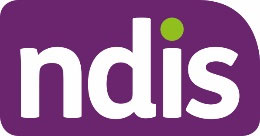 PACE Off-System Pack
PACE Off-System Pack
FOI 24/25-0141
For Internal Use Only
Question Response
What are this person’s current housing
Private home: owned by family
arrangements?
Private home: rented from private landlord
Private home: rented from public authority
Large Residential (20+ people)
Small Residential (<20 people)
Aboriginal or Torres Strait Islander
community residence
Supported
Accommodation
Short-term
crisis
Temporary
Shelter
(homeless)
Other (please specify):
Are there rooms or parts of the house
Yes
that limit the person’s day to day
No, not fully accessible
activities, compared to their peers?
Unsure/Unanswered
If answered Yes to above, which room
Bathroom
limits the person’s daily activities
Internal access
most?
External access
Kitchen
Unsure/Unanswered
3. DAILY SUPPORT
Question Response
Are there any concerns with this
Yes developmental concerns
person’s ability to undertake self-care
No developmental concerns
activities?
Unsure/Unanswered
V1.0
PACE Off-System Pack
Page 2 of 11
This document is uncontrolled when printed.
Page 25 of 68
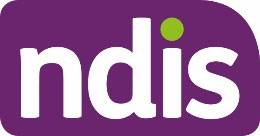 PACE Off-System Pack
PACE Off-System Pack
FOI 24/25-0141
For Internal Use Only
Question Response
If answered No, do you need support
Yes
with personal care (e.g. washing
No
yourself, dressing)?
Unsure/Unanswered
Do you need support for travel &
Yes
transport?
No
Unsure/Unanswered
Does this person require Daily Living
Assistance in shared living
support in one or more of the following
AUSLAN
Lessons
areas?
Community
access
Group
activity
Host/alternative family situation
Household
assistance
Informal support available
Interpreting and translating
Live in carer
Personal
care
Referral to mainstream service
Short
term
accommodation
Support to sustain informal care
Supported living – single person
Transport
assistance
Vacation
care
Epilepsy or Seizure
24 hours care support on request
Not
Applicable
Auslan
interpreting
Continence
aids
Personal care in schools
Specialised school transport
Auslan language development
V1.0
PACE Off-System Pack
Page 3 of 11
This document is uncontrolled when printed.
Page 26 of 68
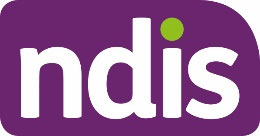 PACE Off-System Pack
PACE Off-System Pack
FOI 24/25-0141
For Internal Use Only
Question Response
Specialised swimming lessons for water
safety due to disability or high risk
4. CAPACITY BUILDING
Question Response
Does the person require assistance
Participant does not require assistance
with choosing and managing supports
when choosing and managing supports
in their plan?
Participant has assistance when choosing
and managing supports
Participant does not have assistance but
requires it when choosing and managing
supports
(Do not read the response options to
Yes – more than 9 hours per month =
the participant/respondent). Is funding
Support Coordination – Level 1a
for support coordination required?
Yes – 6-9 hours per month = Support
Coordination – Level 1b
Yes – 4-6 hours per month = Support
Coordination – Level 1c
Yes – 2-4 hours per month = Support
Coordination – Level 2
Yes – 1-2 hours per month = Support
Coordination – Level 3
Yes – up to 1 hour per month = Support
Coordination – Level 4
Yes – connection and monitoring = Support
Coordination – Level 5
Connection only = Support Coordination –
Level 6
V1.0
PACE Off-System Pack
Page 4 of 11
This document is uncontrolled when printed.
Page 27 of 68
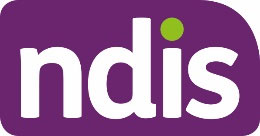 PACE Off-System Pack
PACE Off-System Pack
FOI 24/25-0141
For Internal Use Only
Question Response
What level of capacity building is
Very high = Capacity Building Level 1
required?
High = Capacity Building Level 2
Moderate = Capacity Building Level 3
Low = Capacity Building Level 4
None = Capacity Building Level 5
Unsure/Blank = Capacity Building Level 5
What level of capacity building is
Very
high
required to support goal achievement?
High
Moderate
Low
None
Unsure/Unanswered
Does this person need support to
Informal support available
improve their health and wellbeing?
Referral to mainstream allied health
Referral to mainstream service
Personal
Training
Requires exercise physiology
Requires active overnight support
Other
(please
specify):
Does this person need support to
Assessment by a nurse
improve their daily living?
Budgeting
Daily
Planning
Decision
Making
Individual
Assessment
Informal Support available
Multidisciplinary
intervention
Mobility
training
V1.0
PACE Off-System Pack
Page 5 of 11
This document is uncontrolled when printed.
Page 28 of 68
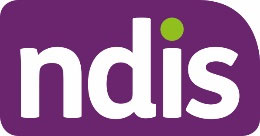 PACE Off-System Pack
PACE Off-System Pack
FOI 24/25-0141
For Internal Use Only
Question Response
Referral to mainstream service
Specialist Driver training
Therapy
assistant
Trans disciplinary therapy package
Therapy/Skills
training
Travel
training
Emotional
development
Oral eating drinking care plan
Is NDIS funding required to assess,
Assessment
required
find, and set up assistive technology
Referral to mainstream service
supports?
Therapy/skills
training
No/Not
applicable
(
Not to be asked of the participant)
Yes
Are there any indicators of challenging
No
behaviour (e.g. verbal/physical
aggression; inappropriate sexual or
Unsure/Unanswered
social behaviour; lack of initiation)?
(Not to be asked of the participant) If
Please specify:
answer Yes to the above question,
what behaviours does the participant
demonstrate (e.g. escaped secure
premises; attacks others; breaks
objects/smashes windows)?
My child is developing functional,
Not very well
learning and coping skills that are
Pretty well
appropriate to his/her ability and
circumstances
Very
well
V1.0
PACE Off-System Pack
Page 6 of 11
This document is uncontrolled when printed.
Page 29 of 68
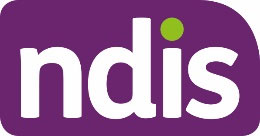 PACE Off-System Pack
PACE Off-System Pack
FOI 24/25-0141
For Internal Use Only
Question Response
Most the time my child is able to do
Not very well
tasks at home, at school and in the
Pretty well
community that a child of the same
age would be expected to be able to
Very
well
do?
Does this person need support to
Plan Management Provider
improve their life choices?
Specialist Support Coordination
Support Connection
Support Coordination
Recovery
Coach
Does this person need support to
Behavioural Intervention
improve their relationships?
Behavioural Support
Informal Support Available
Referral to Mainstream Counselling
Referral to Mainstream Service
Social Skills Development
Behaviours of concern – Kick, punch, throw
support
Behaviours of concern – higher risk
Breaking
Point
Does this person have a support
Participant has a reliable support network
network of friends and family who are
who can provide additional support
available to assist them?
Participant is independent
Participant does not have reliable support
network and would like some additional
informal supports to develop those networks
Participant does not have reliable support
network and does not want additional
informal supports to develop those networks
V1.0
PACE Off-System Pack
Page 7 of 11
This document is uncontrolled when printed.
Page 30 of 68
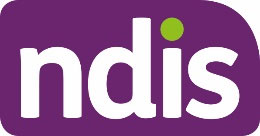 PACE Off-System Pack
PACE Off-System Pack
FOI 24/25-0141
For Internal Use Only
Question Response
Does this person need support to
Activity Costs
improve their Social/Community
Informal Support Available
participation?
Peer
Support/Mentoring
Referral to Mainstream Service
Referral to Volunteer Work
Skills Development including group
Is the Disability Stable?
Yes
No
Unsure/Unanswered
Are there any major life transitions
Yes in next 2 years
likely in the next 36 months that may
Yes in next 3 years
significantly impact support funding?
No
Does this person need support to
Informal Support Available
improve their living arrangements?
Referral to Mainstream Service
Support to Locate Accommodation
Support to Maintain Tenancy
Support to Sustain Informal Care
Therapy/Skills
Training
Requires Respirator or Ventilator
Has his person been actively involved
No and I don’t want to be
in a community cultural or religious
No, but I would like to be
group in the last 12 months?
Yes, a general community group
Yes, a group for people with a disability
Does this person get support for
Yes
getting out go the house?
No
Unsure/Unanswered
V1.0
PACE Off-System Pack
Page 8 of 11
This document is uncontrolled when printed.
Page 31 of 68
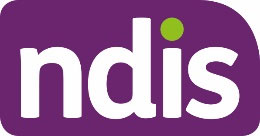 PACE Off-System Pack
PACE Off-System Pack
FOI 24/25-0141
For Internal Use Only
Question Response
If answered No to the above, does this
Yes
person need support for getting out of
No
the house
Unsure/Unanswered
If answered Yes to above, how much
None (0%) = Social Participation – Level 1
support for getting out of the house is
Some (~25%) = Social Participation – Level
provided by informal or community
2
supports (e.g. family, friends,
neighbours, community networks)?
About 50% = Social Participation – Level 3
All or most (~75%) = Social Participation –
Level 4
Unsure/Unanswered = Social Participation –
Level 4
5. CARERS
Question Response
Who provides primary care for this
Parent/s (including step-parents/siblings)
child?
Shared care between separated parent/s
Grandparents
Other family
Out of Home Care
Unsure/Unanswered
Other (please specify):
Home much support if provided to the
All or most (~75%)
child by the primary carer, other family
About 50%
member, friends and/or neightbours
(i.e. informal care)?
Some (~25%)
None (0%)
Unsure/Unanswered
6. EQUIPMENT AND CONSUMABLES
V1.0
PACE Off-System Pack
Page 9 of 11
This document is uncontrolled when printed.
Page 32 of 68
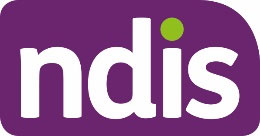 PACE Off-System Pack
PACE Off-System Pack
FOI 24/25-0141
For Internal Use Only
Question Response
Does this person currently use any
Child level 1 – high user only, or moderate
consumable products (e.g. continence
use and higher cost
products/aids, Home Enteral Nutrition
Child level 2 – moderate use, moderate cost
or tube feeding for getting your food)?
Child level 3 – low to moderate use, low to
moderate cost
Child level 4 – low use, low cost
Child level 5 – none necessary
Does this person currently use any
Yes
equipment?
No
Unsure/Unanswered
Does equipment require maintenance?
Yes
No
Unsure/Unanswered
Does this person require any new
Yes
equipment?
No
Unsure/Unanswered
(Do not read out options to person)
Car
modification
Please select any high cost/quotable
Hoist
AT items that the person requires
Manual
wheelchair
Orthoses
Power
bed
Powered
wheelchair
Pressure care cushion
Prostheses
full
Prostheses
part
Ramp
Rental
V1.0
PACE Off-System Pack
Page 10 of 11
This document is uncontrolled when printed.
Page 33 of 68
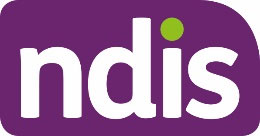 PACE Off-System Pack
PACE Off-System Pack
FOI 24/25-0141
For Internal Use Only
Question Response
Scooter
Shower
support
Walking
aides
Standing
frame
Postural support chair
Other (please specify):
Does this person have any vehicle
Assessment
required
modification needs?
Referral
to
mainstream
Does this person have any home
Assessment
required
modification needs?
Referral
to
mainstream
V1.0
PACE Off-System Pack
Page 11 of 11
This document is uncontrolled when printed.
Page 34 of 68
 DOCUMENT 4
OFFICIAL
DOCUMENT 4
OFFICIAL
FOI 24/25-0141
Knowledge Article
For Internal Use Only
The contents of this document are OFFICIAL.
ARCHIVED
Early childhood – Overview – Personal
Environmental Circumstances (PEC) including
Capacity Building questions
Guidance in this document is not approved for use unless you view it in PACE.
This article provides guidance for
early childhood partners and
early childhood delegates about:
how the early childhood partner records information about the child’s developmental
areas of need in the PEC case
the developmental areas of need
determining
high and
medium to low developmental areas of need
how the early childhood delegate can use the information in the PEC case to determine
reasonable and necessary early childhood supports.
Overview on completing the PEC case
The PEC case is completed by an
early childhood partner when a child is applying to the
NDIS and again during a transition or scheduled check-in before a plan reassessment.
Information collected within the PEC
case allows us to:
explore the child’s support needs
understand how the child and family manages daily life
assist the early childhood delegate in making reasonable and necessary decisions.
To complete the PEC case:
use a conversational approach to gather information from families
avoid asking the PEC
questions directly
use the questions as a guide to check that you are gathering the required information
V1.0 ARCHIVED 2023-10-09 Early childhood – Overview – Personal Environmental
Circumstances (PEC) including Capacity Building questions
Page 1 of 4
This document is uncontrolled when printed
OFFICIAL
Page 35 of 68
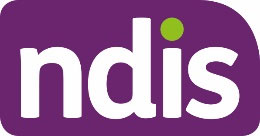 OFFICIAL
OFFICIAL
FOI 24/25-0141
Knowledge Article
For Internal Use Only
avoid selecting blank or unanswered options when entering responses. Otherwise, this
could result in a Typical Support Package (TSP) that does not reflect the participant and
their family’s actual circumstances and need
upload any documents you refer to into PACE.
What are developmental areas of need?
Consider what a child can do in everyday activities, at home, in the community and in early
childhood education. Consider their strengths and needs across the following developmental
areas:
Cognitive development
How the child understands and remembers information. How they learn, practice, and use new
skills. How they problem solve, go between activities and places, play with toys, and develop
their safety awareness.
Social development
How the child builds and nurtures relationships with family and with others. How they develop
their interests, interact, and connect with others through play and childhood activities, and
make friendships with peers.
Self-care
How the child looks after themselves or their own needs, such as how they bathe, dress
themselves, eat, drink, use the toilet and sleep.
Receptive and expressive language
How the child communicates with other people to express their wants, needs, preferences and
ideas. How they understand and use words, gestures, signs (Key Word Sign (KWS)),
Australian Sign Language (Auslan) and facial expressions to do this.
Emotional development
How the child recognises, understands, expresses, and regulates their feelings and their
sensory needs. How they build their confidence, self-identity, wellbeing. Whether there are any
behaviours that are challenging or behaviours of concern.
Motor development
V1.0 ARCHIVED 2023-10-09 Early childhood – Overview – Personal Environmental
Circumstances (PEC) including Capacity Building questions
Page 2 of 4
This document is uncontrolled when printed
OFFICIAL
Page 36 of 68
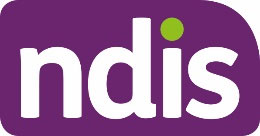 OFFICIAL
OFFICIAL
FOI 24/25-0141
Knowledge Article
For Internal Use Only
How the child moves around, such as crawling, walking, and running; and how they use their
hands to pick up things. Gross motor development relates to larger muscle development
(body, arms, legs). Fine motor development relates to smaller muscle development (hands,
fingers).
Vision supports
How the child experiences degree of vision loss (reduction in near and distance acuity),
contrast sensitivity, light and glare sensitivity, adaption to light change and visual fatigue.
Hearing supports
The child's type (unilateral, bilateral, sensorineural, mixed, etc.) and degree of hearing loss
(mild, moderate, severe, profound). The family’s communication choice, and use of hearing
technology. How they communicate with others and any information about environmental
impacts, impacts on their social participation and fatigue.
What are high and medium to low areas of need?
For each developmental area of need, consider the level of early childhood supports required
over the course of the plan to support the child’s development and functioning in daily life. Do
this by determining whether the support required for each developmental area of need is
high
or
medium to low.
When determining if a developmental area of need is a
high or
medium to low, consider the
level of effort required over the course of the plan to support the child’s development. For
example, an area of need that may require regular, frequent and sustained early childhood
supports over the duration of the plan is likely to be a
high area of need. A shorter burst of
early childhood supports followed by occasional reviews is likely to be a
medium to low area
of need.
Information gathering tasks for a transition check-in or
scheduled check-in
The PEC case is originally completed when supporting a family to apply to the NDIS and
influences the TSP.
The PEC case is completed again by the early childhood partner during a check-in for a plan
reassessment. The information gathered will capture the child’s progress towards their goals
and support needs, including their current functional capacity in the home and community. This
V1.0 ARCHIVED 2023-10-09 Early childhood – Overview – Personal Environmental
Circumstances (PEC) including Capacity Building questions
Page 3 of 4
This document is uncontrolled when printed
OFFICIAL
Page 37 of 68
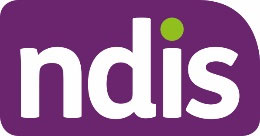 OFFICIAL
OFFICIAL
FOI 24/25-0141
Knowledge Article
For Internal Use Only
information can then be used by an early childhood delegate in planning conversations and to
make a reasonable and necessary decisions.
Go to article
Early childhood – How to complete the Personal Environmental
Circumstances (PEC) Capacity Building questions for examples on how to complete the
questions.
Version control
Amended
Version
Brief Description of Change
Status
Date
by
1.0
New article – Tasmania PACE pilot APPROVED 2023-03-02
Archived - content has been split
1.0
ARCHIVED 2023-10-09
out and shifted into 2 new articles.
V1.0 ARCHIVED 2023-10-09 Early childhood – Overview – Personal Environmental
Circumstances (PEC) including Capacity Building questions
Page 4 of 4
This document is uncontrolled when printed
OFFICIAL
Page 38 of 68
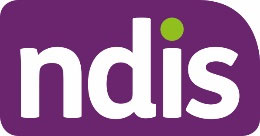 DOCUMENT 5
OFFICIAL
DOCUMENT 5
OFFICIAL
FOI 24/25-0141
Knowledge Article
For Internal Use Only
The contents of this document are OFFICIAL.
ARCHIVED
Early childhood – How to complete the
Personal Environmental Circumstances (PEC)
Capacity Building questions
Guidance in this document is not approved for use unless you view it in PACE.
This article provides guidance for
early childhood partners on:
how to complete the Personal and Environmental Circumstances (PEC) case.
Below are some examples on how you may answer the free text fields in the PEC Capacity
Building questions. Please use the following tables as a
guide only.
Table 1 – Capacity Building – Developmental areas of
need
PEC question: For each developmental area below, what level of early childhood supports
(capacity building) is needed to build capacity of the child and family?
For each developmental area of need identified and selected, describe what the child can do
and indicate why you have chosen
high or
medium to low area of need.
Developmental
Example wording for free text fields
area of need
High example –
4 years old:
s47F- personal privacy
flits between activities and lov
s47F- personal privacy
es outdoor play.
is starting to
s47F- personal privacy
use visual supports to help with what is coming next, to complete
Cognitive
steps in a task, to join activities.
shows little awareness of
s47F- personal privacy
s47F- personal privacy
safety.
runs across roads, climbs shelves.
s47F- personal privacy
Medium to low example – s47F- personal
5 years old:
privacy
s47F- personal likes playing wit
privacy
h other children but follows rules strictly.
s47F- personal privacy
doesn’t cope with change, needing a lot of support.
learns best
s47F- personal privacy
V1.0 2023-10-09 ARCHIVED
Early childhood – How to complete the
Personal Environmental Circumstances (PEC) Capacity Building questions
Page 1 of 6
This document is uncontrolled when printed
OFFICIAL
Page 39 of 68
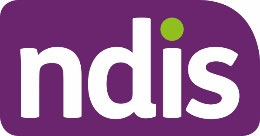 OFFICIAL
OFFICIAL
FOI 24/25-0141
Knowledge Article
For Internal Use Only
visually and by doing things.
is easily confused with verbal
s47F- personal privacy
instructions.
finds it
s47F- personal privacy
hard to get started on tasks.
High example – s47F- personal
2 ½ years old:
privacy
s47F- personal mostly plays on
privacy
own.
s47F- personal privacy
likes water play and watching
s47F- personal privacy
Wiggles over and over. s47F- personal likes rough and tumble play with
privacy
s47F- personal privacy
brothers.
s47F- personal does
privacy
not respond to
name
s47F- personal privacy
or greet people.
is learning
s47F- personal privacy
Social skills
to observe others and copy their actions.
Medium to low example –
4 years old:
s47F- personal privacy
has one friend.
s47F- personal privacy
tends to follow
s47F- personal privacy
friend’s lead.
s47F- personal privacy
does
s47F- personal privacy
not always like it if others try to join in.
sometimes needs adult
s47F- personal privacy
support to take turns or resolve issues.
High example – s47F- personal
4 years old:
privacy
s47F- personal
requires full support with self
privacy
-care tasks, such as, to use a
fork and knife, or to open containers. s47F- personal puts
privacy
feet out and
s47F- personal privacy
raises
hands when
s47F- personal privacy
is helped to get dressed.
s47F- personal privacy
Self-care skills
Medium to low example – s47F- personal
5 years old:
privacy
s47F- personal
wak
privacy
es frequently and co-sleeps with
parents. They would
s47F- personal privacy
like
to sleep in
s47F- personal privacy
bed as this is impacting their sleep. As
s47F- personal privacy
expected for
age,
s47F- personal privacy
s47F - personal mostly
privacy
dresses, bathes and feeds s47F- personal
privacy
with verbal reminders.
is toilet trained.
s47F- personal privacy
High example –
4 years old:
s47F- personal privacy
uses up to 3 words in a sentence to communicate.
s47F- personal privacy
words are
s47F- personal privacy
not clear and gets frustrated readi
s47F- personal privacy
ly.
requires short verbal
s47F- personal privacy
prompts and visual supports to follow instructions and needs support
Language and
to complete daily routines at home and preschool.
communication
Medium to low example –
3 years old:
s47F- personal privacy
understands what is said to
s47F- personal privacy
and is able to follow instructions
s47F- personal privacy
as expected for
age.
s47F- personal privacy
speech is not clear making it
s47F- personal privacy
challenging for
family and friends
s47F- personal privacy
to follow what
is trying to
s47F- personal privacy
say.
High example – s47F- personal privacy
3 ½ years old:
s47F- personal privacy
Emotional
emotions escalate quickly - easily excitable, frustrated or
s47F- personal privacy
development
angered. Does not like unexpected noises or movement.
takes 30
mins to calm down. At times hurts s47F- personal or others.
privacy
is learning to
s47F- personal privacy
recognise
feelings
s47F- personal privacy
and ways to calm down.
V1.0 2023-10-09 ARCHIVED
Early childhood – How to complete the
Personal Environmental Circumstances (PEC) Capacity Building questions
Page 2 of 6
This document is uncontrolled when printed
OFFICIAL
Page 40 of 68
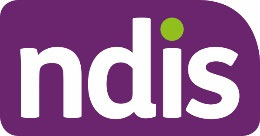 OFFICIAL
OFFICIAL
FOI 24/25-0141
Knowledge Article
For Internal Use Only
Medium to low example – s47F- personal
5 years old:
privacy
s47F- personal
clings to
privacy
dad when dr
s47F- personal privacy
opped off at preschool.
often
s47F- personal privacy
refuses to talk or play with other children, at preschool and with family
friends. At home is ok.
s47F- personal privacy
parents are concerned ab
s47F- personal privacy
out
s47F- personal privacy
starting school next year.
High example – s47F- personal
4 years old:
privacy
s47F- personal
uses AFO’s to maintain
privacy
balance.
s47F- personal privacy
s47F- personal climbs up steps
privacy
one at a time, holding onto a rail for support. s47F- personal lov
privacy
es being
outdoors and is beginning to run,
typically falls after 5-10 steps.
s47F- personal privacy
Physical
This impacts on
participation at preschool.
s47F- personal privacy
development
Medium to low example –
4 ½ years old:
s47F- personal privacy
scribbles on a page and copies lines, but not shapes.
s47F- personal privacy
holds a
s47F- personal privacy
pencil with an immature grasp.
seeks help to open containers and
s47F- personal privacy
packets, and with buttons, zips and laces on clothes.
plays on
s47F- personal privacy
playground equipment as expected for
age.
s47F- personal privacy
High example –
3 years old:
s47F- personal privacy
uses a long cane and requires assistance when walking in new
s47F- personal privacy
environments.
requires support
s47F- personal privacy
from others to locate play
activities at childcare (e.g. items on a table, bag from
locker, play
s47F- personal privacy
Vision
areas in the room).
Medium to low example – s47F- personal
4 1/2 years old:
privacy
s47F- personal loves
privacy
drawing but has difficulty using low contrast materials.
can move about at home and pr
s47F- personal privacy
eschool, but needs support in
new environments, especially walking down steps and on uneven
surfaces.
High example – s47F- personal
4 years old:
privacy
s47F- personal
has a profound hearing los
privacy
s in both ears. s47F- personal wears
privacy
cochlear implants,
is being su
s47F- personal privacy
pported to use Auslan and speech.
has trouble hearing people
s47F- personal privacy
with background noise and needs
Hearing
support when communicating.
is
s47F- personal
tired at the end of the day.
privacy
Medium to low example – s47F- personal privacy
4 years old:
s47F- personal
lov
privacy
es having stories read to
but needs
s47F- personal privacy
family to
s47F- personal privacy
communicate on
right side.
s47F- personal privacy
can have trouble hearing people
s47F- personal privacy
and environmental noises when the setting is noisy.
also needs
s47F- personal privacy
support and reminders to wear
hearing aid.
s47F- personal privacy
V1.0 2023-10-09 ARCHIVED
Early childhood – How to complete the
Personal Environmental Circumstances (PEC) Capacity Building questions
Page 3 of 6
This document is uncontrolled when printed
OFFICIAL
Page 41 of 68
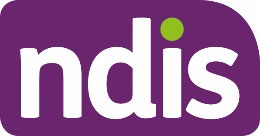 OFFICIAL
OFFICIAL
FOI 24/25-0141
Knowledge Article
For Internal Use Only
Table 2– Capacity Building – Intensive early childhood
supports
If the need for this support is identified attach any relevant evidence including reports.
PEC questions
Examples for free text fields
Please specify: (
Add name e.g. parent or
professional, profession and date of report/s
(if available).
Who has recommended intensive early
s47F- personal privacy (mother)
childhood supports?
Dr s47F- personal privacy (Paediatrician). Report date
10/7/2022.
s47F- personal privacy (Speech pathologist). Report date
11/9/2022.
Is an additional level of early childhood
has started preschool.
s47F- personal privacy
teacher has
s47F- personal privacy
supports required to share strategies in
asked for support to help with strategies for
mainstream settings?
behaviour, communication and learning.
Table 3– Capacity Building – Health and wellbeing
Describe the child’s support needs, for each relevant support area. If the information is
available in a report, add the name, profession, date of report/s. Reports must be uploaded
into PACE.
PEC questions
Examples for free text fields
Dysphagia support:
s47F- personal dysphagia supports include difficulties managing
privacy
swallowing secretions and requires full supervision when eating
s47F- personal privacy
Does this person need
and drinking.
has a mealtime management plan. Refer to
s47F- personal privacy
support to improve their report:
(dietitian). Report date: 12/6/2022.
health and wellbeing?
Other, please specify:
has limited mobility and is unable to reposition
s47F- personal privacy
s47F- personal
in
privacy
bed.
requires support for wound and pressure care.
s47F- personal privacy
Refer to report: Dr s47F - personal privacy (paediatrician Children’s Hospital).
Report date: 22/8/2022.
V1.0 2023-10-09 ARCHIVED
Early childhood – How to complete the
Personal Environmental Circumstances (PEC) Capacity Building questions
Page 4 of 6
This document is uncontrolled when printed
OFFICIAL
Page 42 of 68
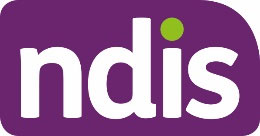 OFFICIAL
OFFICIAL
FOI 24/25-0141
Knowledge Article
For Internal Use Only
Table 4– Capacity Building – Regulated restrictive
practices
Describe the child’s behaviour of concern and supports needs, for each relevant area. Include
the source of the information. If the information is available in a report, add the name,
profession, date of report/s. Reports must be uploaded into PACE.
PEC
Examples for free text fields
questions
s47F- personal
is prescribed Risperidone medi
privacy
cation to manage
self-harming
s47F- personal privacy
Chemical
and regular tantrums. Refer to report: Dr. s47F- personal privacy (Paediatrician).
Report date: 19/10/2022.
4 years old:
s47F- personal privacy
s47F- personal
behaviour
privacy
therapist has recommended locks on the
Environmental fridge and pantry to prevent
fr
s47F- personal om accessing food between meals
privacy
s47F- personal privacy
s47F- personal privacy
because
overeats. Refer to report:
(Behaviour Therapist).
Report date: 3/7/2022.
s47F- personal privacy
s47F- personal privacy
s47F- personal privacy
Physical
5 years old:
parents said that
support worker bear hugs
when
s47F- personal privacy
mum leaves home to pr
s47F- personal privacy
event
running after her and to
s47F- personal privacy
help
to calm down.
s47F - personal privacy
s47F- personal privacy
s47F- personal privacy
s47F- personal privacy
Mechanical
6 years old:
occupational therapist,
, has
recommended a stroller to secure
in public places so
s47F- personal privacy
cannot run
s47F- personal privacy
away. Refer to report: s47F- personal privacy (OT). Report date: 30/11/2022.
s47F- personal mother said
privacy
has asked the support worker to l
s47F- personal privacy
ock
in
s47F- personal privacy
s47F- personal privacy
Seclusion
room when is lashing out at
s47F- personal privacy
si
s47F- personal sters or throwing objects around the
privacy
house when angry.
Go to article
Early childhood – Overview – Personal Environmental Circumstances (PEC)
including Capacity Building questions to learn more about completing a PEC case in early
childhood.
Version control
Amended
Version
Brief Description of Change
Status
Date
by
1.0
New article – Tasmania PACE pilot APPROVED 2023-03-09
V1.0 2023-10-09 ARCHIVED
Early childhood – How to complete the
Personal Environmental Circumstances (PEC) Capacity Building questions
Page 5 of 6
This document is uncontrolled when printed
OFFICIAL
Page 43 of 68
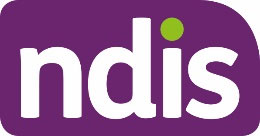 OFFICIAL
OFFICIAL
FOI 24/25-0141
Knowledge Article
For Internal Use Only
Archived - content has been split
1.0
ARCHIVED 2023-10-09
out and shifted into 2 new articles.
V1.0 2023-10-09 ARCHIVED
Early childhood – How to complete the
Personal Environmental Circumstances (PEC) Capacity Building questions
Page 6 of 6
This document is uncontrolled when printed
OFFICIAL
Page 44 of 68
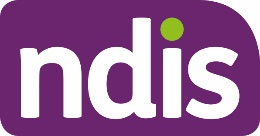 DOCUMENT 6
OFFICIAL
DOCUMENT 6
OFFICIAL
FOI 24/25-0141
Knowledge Article
For Internal Use Only
The contents of this document are OFFICIAL.
EC - PEC - Capacity Building - How to complete
early childhood supports questions
Guidance in this document is not approved for use unless you view it in PACE.
This article provides guidance for
early childhood partners and
planner delegates on:
how to complete the
Personal and Environmental Circumstances (PEC) case
capacity building questions relating to early childhood supports, including intensive early
childhood support.
You must consider the role you deliver to support a successful completion of the PEC so that
the Typical Support Package (TSP) best reflects the participant and their family’s actual
circumstances and need.
Recent updates
October 2023
Current guidance
Before you start
You have read and understood:
Article
EC: PEC – Capacity Building – Early childhood supports overview to learn
more about what we mean by developmental areas of need, levels of early childhood
support, including intensive early childhood supports.
Additional knowledge articles
For information on the PEC case – Capacity building questions that relate to other areas, go to
articles:
EC – PEC – Capacity Building – Health and wellbeing
EC – PEC – Capacity Building – Regulated restrictive practices
EC – PEC – Capacity Building – Hearing
V1.0 2023-10-09 - PEC - Capacity Building - How to complete early childhood supports
questions 309865829
Page 1 of 6
This document is uncontrolled when printed
OFFICIAL
Page 45 of 68
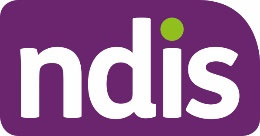 OFFICIAL
OFFICIAL
FOI 24/25-0141
Knowledge Article
For Internal Use Only
How to complete early childhood support questions
Below are some examples on how you may answer the free text fields in the PEC Capacity
Building questions relating to early childhood supports, including intensive early childhood
supports.
The free text fields have character limits. If more space is required, add the information to
‘internal note’ in the Activity log. Please use the following tables as a
guide only.
Table 1 – Developmental areas of need
PEC question: ‘For each developmental area below, what level of early childhood supports
(capacity building) is needed to build capacity of the child and family?’
For each developmental area that is identified as needing capacity building support, select
whether the NDIS funded support needed is
medium to low or
high. Describe in the free text
field what the child can do to indicate why you have selected
medium to low or
high. High
may include very substantial support that is required for intensive early childhood supports.
Developmental
Example wording for free text fields
area of need
Medium to low example – s47F- personal
5 years old:
privacy
s47F- personal likes playing wit
privacy
h other children but follows rules strictly.
s47F- personal privacy
doesn’t cope with change, needing a lot of support.
learns best
s47F- personal privacy
visually and by doing things.
is easily confused with verbal
s47F- personal privacy
instructions.
finds it
s47F- personal privacy
hard to get started on tasks.
High example –
4 years old:
s47F- personal privacy
flits between activities and lov
s47F- personal privacy
es outdoor play.
is starting to
s47F- personal privacy
Cognitive
use visual supports to help with what is coming next, to complete
steps in a task, to join activities.
shows little awareness of
s47F- personal privacy
s47F- personal privacy
safety.
runs across roads, climbs shelves.
s47F- personal privacy
High example (for intensive early childhood supports) – s47F- personal
4
privacy
years old Very substantial support: enjoys repetitive play (lining up cars and
spinning wheels), needs adult support to try activities and develop
play skills at home at childcare, to sit on a mat at group time, to follow
routines and stay longer on tasks.
Medium to low example –
4 years old:
s47F- personal privacy
s47F- personal privacy
s47F- personal privacy
s47F- personal privacy
s47F- personal privacy
Social skills
has one friend.
tends to follow
friend’s lead.
does
not always like it if others try to join in.
sometimes needs adult
s47F- personal privacy
support to take turns or resolve issues.
V1.0 2023-10-09 - PEC - Capacity Building - How to complete early childhood supports
questions 309865829
Page 2 of 6
This document is uncontrolled when printed
OFFICIAL
Page 46 of 68
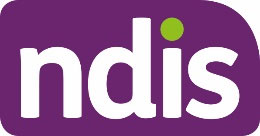 OFFICIAL
OFFICIAL
FOI 24/25-0141
Knowledge Article
For Internal Use Only
High example – s47F- personal
2 ½ years old:
privacy
s47F- personal mostly plays on
privacy
own.
s47F- personal privacy
likes water play and watching
s47F- personal privacy
Wiggles over and over. s47F- personal likes rough and tumble play with
privacy
s47F- personal privacy
brothers.
s47F- personal does
privacy
not respond to
name
s47F- personal privacy
or greet people.
is learning
s47F- personal privacy
to observe others and copy their actions.
High example (for intensive early childhood supports) – s47F- personal
4
privacy
years old: Very substantial support: plays on
own, screams and cries when
s47F- personal privacy
children join
play and take
s47F- personal privacy
s a long time to calm, needs adult
support to join in play with others.
is picked up from childc
s47F- personal privacy
are early
due to behaviours, impacting on parent’s work.
Medium to low example – s47F- personal
5 years old:
privacy
s47F- personal
wak
privacy
es frequently and co-sleeps with
parents. They would
s47F- personal privacy
like
to sleep in
s47F- personal privacy
bed as this is impacting their sleep. As
s47F- personal privacy
expected for
age,
s47F- personal privacy
s47F- personal
mostly
privacy
dresses, bathes and feeds s47F- personal
privacy
with verbal reminders.
is toilet trained.
s47F- personal privacy
High example – s47F- personal
4 years old:
privacy
s47F- personal
requires full support with self-c
privacy
are tasks, such as, to use a fork
and knife, or to open containers. s47F- personal put
privacy
s
feet out and raises
s47F- personal privacy
hands when
s47F- personal privacy
is helped to get dressed.
s47F- personal privacy
High example (for intensive early childhood supports) – s47F- personal
4
privacy
years old: Very substantial support required for meal times, dressing, bathing,
Self-care skills
toileting and sleep. Refer to Activity log.
Activity log example (internal note) Capacity building - Self-care skills – high (very substantial support)
s47F- personal
requires full adult assist
privacy
ance with all self-care routines:
Meal times - is encouraged to eat a variety of foods and use cutlery
but prefers to eat with
hands.
s47F- personal privacy
diet is limited and can take up
s47F- personal privacy
one hour to eat.
parents end up feeding
s47F- personal privacy
the rest of his meal.
s47F- personal privacy
Dressing - is encouraged to assist with dressing and has started to
move
arms and legs into position.
s47F- personal privacy
Bath time - does no
s47F- personal privacy
t like to have a bath or shower.
will stay in
s47F- personal privacy
the bath and have
body washed if a
s47F- personal privacy
parent is in the bath with
s47F- personal privacy
kicks and has started hitting
s47F- personal privacy
s47F- personal
when
privacy
has
s47F- personal privacy
hair washed,
s47F- personal privacy
so parents are now using dry shampoo.
V1.0 2023-10-09 - PEC - Capacity Building - How to complete early childhood supports
questions 309865829
Page 3 of 6
This document is uncontrolled when printed
OFFICIAL
Page 47 of 68
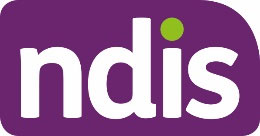 OFFICIAL
OFFICIAL
FOI 24/25-0141
Knowledge Article
For Internal Use Only
Toileting - wears nappies day and night. Toileting attempts have
resulted in meltdowns.
runs and hides when it is time for a nappy
s47F- personal privacy
change. It can take up to 30 minutes with s47F- personal kicking and
privacy
screaming during nappy changes.
Sleep - enjoys having a book read to
but refuses to
s47F- personal privacy
go to bed. It
takes
2 hours to get to sleep.
s47F- personal privacy
parents pat
s47F- personal privacy
to sleep.
s47F- personal privacy
s47F- personal privacy
wakes around midnight and gets into their bed.
will kick and
s47F- personal privacy
scream if is carried back to
s47F- personal privacy
own bed so it is easier to let
s47F- personal privacy
s47F- personal privacy
sleep in their bed.
Medium to low example –
3 years old:
s47F- personal privacy
understands what is said to
s47F- personal privacy
and is able to follow instructions
s47F- personal privacy
as expected for
age.
s47F- personal privacy
speech is not clear making it
s47F - personal privacy
challenging for
family and friends
s47F- personal privacy
to follow what
is trying to
s47F- personal privacy
say.
High example –
4 years old:
s47F- personal privacy
uses up to 3 words in a sentence to communicate.
s47F- personal privacy
words are
s47F- personal privacy
Language and
not clear and gets frustrated readi
s47F - personal privacy
ly.
requires short verbal
s47F- personal privacy
communication
prompts and visual supports to follow instructions and needs support
to complete daily routines at home and preschool.
High example (for intensive early childhood supports) – s47F- personal
4
privacy
years old: Very substantial support: has 3 words, leads
parents by hand to
s47F- personal privacy
make a request, starting to use PEC, gets frustrated and has
meltdowns when is not understood,
s47F- personal privacy
follows 1 step instruction with
adult prompting and physical support.
Medium to low example – s47F- personal
5 years old:
privacy
s47F- personal
clings to
privacy
dad when dr
s47F- personal privacy
opped off at preschool.
often
s47F- personal privacy
refuses to talk or play with other children, at preschool and with family
friends. At home is ok.
s47F- personal privacy
parents are concerned about him
s47F- personal privacy
starting school next year.
Emotional
High example – s47F- personal privacy
3 ½ years old:
development
s47F- personal privacy emotions escalate quickly - easily excitable, frustrated or
angered. Does not like unexpected noises or movement.
takes 30
s47F- personal privacy
mins to calm down. At times hurts s47F- personal or others.
privacy
is learning to
s47F- personal privacy
recognise
feelings
s47F- personal privacy
and ways to calm down.
High example (for intensive early childhood support) – s47F- personal
4
privacy
years old
V1.0 2023-10-09 - PEC - Capacity Building - How to complete early childhood supports
questions 309865829
Page 4 of 6
This document is uncontrolled when printed
OFFICIAL
Page 48 of 68
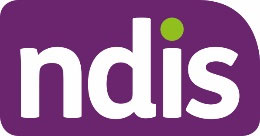 OFFICIAL
OFFICIAL
FOI 24/25-0141
Knowledge Article
For Internal Use Only
Very substantial support: with changes to routines s47F- personal drops to the
privacy
ground, hits
head with
s47F- personal privacy
fist,
s47F- personal privacy screams, cries, kicks, and throws
objects.
parents fi
s47F- personal privacy
nd it challenging to manage these behaviours
and avoid taking
out of the home.
s47F- personal privacy
Medium to low example –
4 ½ years old:
s47F- personal privacy
scribbles on a page and copies lines, but not shapes.
s47F- personal privacy
holds a
s47F- personal privacy
pencil with an immature grasp.
seeks help to open containers and
s47F- personal privacy
packets, and with buttons, zips and laces on clothes.
plays on
s47F- personal privacy
playground equipment as expected for
age.
s47F- personal privacy
High example – s47F- personal
4 years old:
privacy
Physical
s47F- personal
uses AFO’s to maintain
privacy
balance.
s47F- personal privacy
s47F- personal climbs up steps
privacy
development
one at a time, holding onto a rail for support. s47F- personal lov
privacy
es being
outdoors and is beginning to run,
typically falls after 5-10 steps.
s47F- personal privacy
This impacts on
participation at preschool.
s47F- personal privacy
High example (for intensive early childhood support) – s47F- personal
6
privacy
years old: Very substantial support: to learn to use
first manual wheelchair.
s47F- personal privacy
s47F- personal
nee
privacy
ds support to develop
strength and skills
s47F- personal privacy
quickly so
s47F- personal privacy
can use
wheelchair around
s47F- personal privacy
home and school, to maintain
s47F- personal privacy
participation in daily activities.
Medium to low example – s47F- personal
4 1/2 years old:
privacy
s47F- personal loves
privacy
drawing but has difficulty using low contrast materials.
can move about at home and pr
s47F- personal privacy
eschool, but needs support in
new environments, especially walking down steps and on uneven
Vision
surfaces.
High example –
3 years old:
s47F- personal privacy
uses a long cane and requires assistance when walking in ne
s47F- personal privacy
w
environments.
requires support
s47F- personal privacy
from others to locate play
activities at childcare (e.g. items on a table, bag from
locker, play
s47F- personal privacy
areas in the room).
Medium to low example – s47F- personal privacy
4 years old:
s47F- personal
lov
privacy
es having stories read to
but needs
s47F- personal privacy
family to
s47F- personal privacy
Hearing
communicate on
right side.
s47F- personal privacy
can have trouble hearing people
s47F- personal privacy
s47F- personal privacy
and environmental noises when the setting is noisy.
also needs
support and reminders to wear
hearing aid.
s47F- personal privacy
High example – s47F- personal
4 years old:
privacy
V1.0 2023-10-09 - PEC - Capacity Building - How to complete early childhood supports
questions 309865829
Page 5 of 6
This document is uncontrolled when printed
OFFICIAL
Page 49 of 68
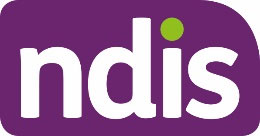 OFFICIAL
OFFICIAL
FOI 24/25-0141
Knowledge Article
For Internal Use Only
s47F- personal
has a profound hearing los
privacy
s in both ears. s47F- personal wears
privacy
cochlear implants,
is being
s47F- personal privacy
supported to use Auslan and speech.
has trouble hearing people
s47F- personal privacy
with background noise and needs
support when communicating.
is
s47F- personal
tired at the end of the day.
privacy
Table 2 – Intensive early childhood supports
PEC question: ‘Has the need for intensive early childhood supports been identified?’
If the need for this support is identified attach any relevant evidence including reports.
PEC questions
Examples for free text fields
Please specify: (
Add name e.g. parent or
professional, profession and date of report/s (if
available).
Who has recommended intensive early s47F- personal privacy (mother)
childhood supports?
Dr s47F- personal privacy (Paediatrician). Report date
10/7/2022.
s47F- personal privacy (Speech pathologist). Report date
11/9/2022.
Example 1:
has started preschool.
s47F- personal privacy
teacher
s47F- personal privacy
has asked for support to help with strategies for
Is an additional level of early childhood behaviour, communication and learning.
supports required to share strategies
Example 2: The childcare centre requires
in mainstream settings?
continued support to implement strategies to
support s47F- personal privacy participation in activities with
s47F- personal privacy
peers.
Version control
Amended
Version
Brief Description of Change
Status
Date
by
V1.0
New
article
APPROVED
2023-10-09
V1.0 2023-10-09 - PEC - Capacity Building - How to complete early childhood supports
questions 309865829
Page 6 of 6
This document is uncontrolled when printed
OFFICIAL
Page 50 of 68
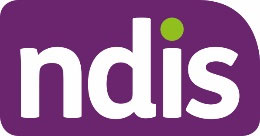 OFFICIAL
DOCUMENT 7
OFFICIAL
DOCUMENT 7
FOI 24/25-0141
SGP Knowledge Article Template
For Internal Use Only
The contents of this document are OFFICIAL.
Record Housing information
This article provides guidance for a
local area coordinator, early childhood coordinator and all NDIA staff (
planner, payment officer, internal review officer, complaints officer,
participant service officer, access officer, quality officer, technical advisor, SDA officer,
NCC officer, provider support) to:
understand housing information
record responses to the Personal and Environmental Circumstances (PEC) case.
Recent updates
Date
What’s changed
June 2023
Update to system steps and language to align with PACE release 1.13.
Before you start
You have:
read
Our Guidelines – Creating your plan
read
Our Guidelines – Home and living supports
read
article,
Complete a Personal Environment Circumstances case
read
article,
Create Personal and Environmental Circumstances case
read
Conversation Style Guide.
Understand and record housing information
Understand housing information
Completing the
Housing questions in the
Personal and Environmental Circumstances case
helps us understand the person’s situation.
Plan developers, Housing Assessors, or the Housing Panel can use this information to
determine the right home and living supports to help the person pursue their goals.
V5.0 2023-06-16
WP17B.19j-25 - 230181840
Page 1 of 2
This document is uncontrolled when printed
OFFICIAL
Page 51 of 68
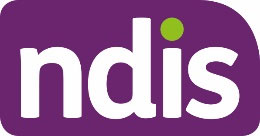 OFFICIAL
OFFICIAL
FOI 24/25-0141
SGP Knowledge Article Template
For Internal Use Only
We can ask for this information from the person, their authorised representative, or their allied
health professional.
Record responses to the Personal and Environmental Circumstances case
Ask the person the
Housing questions in the
Personal and Environmental Circumstances case and record their answer.
Note:
Don’t read the response options to the person out loud. Instead listen carefully to their
answers. You may need to select the most appropriate response for each question. Explain to
the person we need the right information
before we make an eligibility decision.
You
must record a response for each mandatory field marked with an asterisk. Then select
Next to continue.
Note: The PEC case
Steps and questions are dynamic and may change. This will depend on
the person’s situation and age, as well as the response options selected for some questions.
Next steps
1.
Read
article
Record information about Daily Support.
Version control
Version Amended
Brief Description of Change
Status
Date
by
1.0
EMN960 Draft approved by Publishing Approver (EL2) APPROVED
2022-11-08
2.0
JS0082 Approved Class 2
APPROVED
2023-01-24
3.0
JJO192 Revision for staff enhancement common
APPROVED 2023-03-20
capabilities micro-release
4.0
EMN960 Draft approved by Publishing Approver (EL2) APPROVED
2023-06-08
5.0
EMN960 Draft approved by Publishing Approver (EL2) APPROVED
2023-06-16
V5.0 2023-06-16
WP17B.19j-25 - 230181840
Page 2 of 2
This document is uncontrolled when printed
OFFICIAL
Page 52 of 68
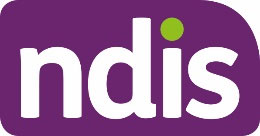 OFFICIAL
DOCUMENT 8
OFFICIAL
DOCUMENT 8
FOI 24/25-0141
SGP Knowledge Article Template
For Internal Use Only
The contents of this document are OFFICIAL.
Record information – daily support
This article provides guidance for a
local area coordinator, early childhood coordinator and all NDIA staff (
planner, payment officer, internal review officer, complaints officer,
participant service officer, access officer, quality officer, technical advisor, SDA officer,
NCC officer, provider support) to:
understand daily supports in a participant’s plan
record daily support information.
Recent updates
Date
What’s changed
July 2023
Update to system steps and language to align with PACE release 1.13.
Before you start
You have:
read
Our Guideline – Mainstream and community support
read
Our Guideline - Disability-related health supports
read
Our Guideline – Reasonable and necessary supports, in section Is the support
something we would expect your informal supports to provide?
read
article,
Complete personal and environmental circumstances
read
article,
Create Personal and Environmental Circumstances case
read
article,
Add disability-related health supports Appendix C – Guide to
disability related Core supports
read
Conversation Style Guide.
Personal and environmental circumstances - daily support
information
The daily support questions help us identify the supports a participant may need in their plan.
V4.0 2023-06-21
WP17B.19j-24 - 230181129
Page 1 of 3
This document is uncontrolled when printed
OFFICIAL
Page 53 of 68
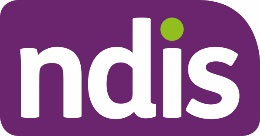 OFFICIAL
OFFICIAL
FOI 24/25-0141
SGP Knowledge Article Template
For Internal Use Only
Understand daily supports in a participant’s plan
Daily supports are in the participant’s core supports budget. We include daily supports when
there is a need to support the participant’s developmental delay or disability with activities such
as:
to wash, shower and dress
household
cleaning
transport
assistance
yard
maintenance.
To determine daily supports funding, we also consider the participant’s informal supports and
other daily support they get from other government mainstream funding. For example,
education and childcare services support.
Other ways we may connect people to daily supports
Participants can also get daily supports from:
post-acute
care
programs
rehabilitation
community
mental
health and nursing. To learn more, go to article,
Update the
participant’s informal, community and mainstream supports during check-in.
Record daily support information
Ask the person the
Daily Support questions in the
Personal and Environmental
Circumstances case and record their answer.
Note:
Don’t read the response options to the person out loud. Listen carefully to their
answers. You may need to select the most appropriate option for each question.
Use your interpersonal skills in a guided conversation to seek answers to each question.
Explain to the person we need the right information
before we make an eligibility decision.
You
must record a response for each mandatory field marked with an asterisk. Then select
Next to continue.
Note: The PEC case
Steps and questions are dynamic and may change. This will depend on
the person’s situation and age, as well as the response options selected for some questions.
Next Steps
1. Read article,
Record information for (Carers) Informal Supports
V4.0 2023-06-21
WP17B.19j-24 - 230181129
Page 2 of 3
This document is uncontrolled when printed
OFFICIAL
Page 54 of 68
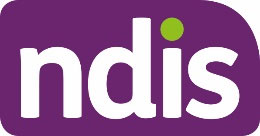 OFFICIAL
OFFICIAL
FOI 24/25-0141
SGP Knowledge Article Template
For Internal Use Only
2. Read article,
Record capacity building information.
Version control
Version Amended
Brief Description of Change
Status
Date
by
1.0 EMN960
Director
approval APPROVED
2022-11-02
2.0
EMN960 Director approval. Minor language
APPROVED 2023-02-16
updates to align with the personal and
environmental circumstances case
3.0 EMN960
Director
approval APPROVED
ND
4.0 EMN960
Draft approved by Publishing Approver (EL2) APPROVED 2023-06-21
V4.0 2023-06-21
WP17B.19j-24 - 230181129
Page 3 of 3
This document is uncontrolled when printed
OFFICIAL
Page 55 of 68
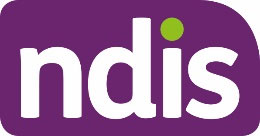 OFFICIAL
DOCUMENT 9
OFFICIAL
DOCUMENT 9
FOI 24/25-0141
SGP Knowledge Article Template
For Internal Use Only
The contents of this document are OFFICIAL.
Record carers information
This article provides guidance for a
local area coordinator, early childhood coordinator and all NDIA staff (
planner, payment officer, internal review officer, complaints officer,
participant service officer, access officer, quality officer, technical advisor, SDA officer,
NCC officer, provider support) to:
record a person’s informal supports information.
Recent updates
July 2023
Update to system steps and language to align with PACE release 1.13.
Article name Record information about informal supports updated to Record carers
information.
Before you start
You have:
read and understood Our Guidelines – Mainstream and community supports
read
article,
Complete personal and environmental circumstances
read
article,
Create Personal and Environmental Circumstances case
read
article,
Record support coordination information
read
Conversation Style Guide.
Understand the carer questions
What are informal supports
Informal supports are the ways family and friends, peer networks or people in the community
help a person with disability. These supports can be important for people with disability in
keeping them safe and well. They provide emotional support or help with participating in work,
study, or social outings.
V3.0 2023-06-21
WP17B.19j-26 - nnnnnnnn
Page 1 of 3
This document is uncontrolled when printed
OFFICIAL
Page 56 of 68
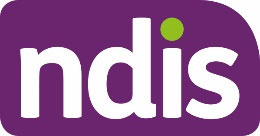 OFFICIAL
OFFICIAL
FOI 24/25-0141
SGP Knowledge Article Template
For Internal Use Only
We don’t fund informal supports. Supports we do fund will often work alongside informal
supports.
Sometimes the friends or family who support a person with disability may not be available. The
person may also want some time apart. We can help in these situations like funding short
breaks, which we also call respite care.
Informal supports, for example friends, family, neighbours, and workmates, are different to
community supports or mainstream supports. Examples of community supports include
sporting clubs or community groups. Examples of mainstream supports include health
professionals or education providers.
What is support coordination
Go to article,
Record support coordination information.
Record carers information
Ask the person the
Carers questions in the
Personal and Environmental Circumstances case and record their answer.
Note:
Don’t read the response options to the person out loud. Listen carefully to their
answers. You may need to select the most appropriate option for each question.
Use your interpersonal skills in a guided conversation to seek answers to each question.
Explain to the person we need the right information
before we make an eligibility decision.
You
must record a response for each mandatory field marked with an asterisk. Then select
Next to continue.
Note: The PEC case
Steps and questions are dynamic and may change. This will depend on
the person’s situation and age, as well as the response options selected for some questions.
Next steps
There are no further steps.
Version control
Version Amended
Brief Description of Change
Status
Date
by
1.0
EMN960 Draft approved by Publishing Approver
APPROVED 2022-11-08
(EL2)
V3.0 2023-06-21
WP17B.19j-26 - nnnnnnnn
Page 2 of 3
This document is uncontrolled when printed
OFFICIAL
Page 57 of 68
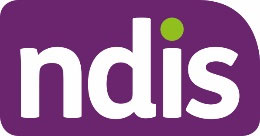 OFFICIAL
OFFICIAL
FOI 24/25-0141
SGP Knowledge Article Template
For Internal Use Only
Version Amended
Brief Description of Change
Status
Date
by
2.0
JJO192 Revision for staff enhancement common
APPROVED 2023-03-17
capabilities micro release
3.0
EMN960 Draft approved by Publishing Approver
APPROVED 2023-06-21
(EL2)
V3.0 2023-06-21
WP17B.19j-26 - nnnnnnnn
Page 3 of 3
This document is uncontrolled when printed
OFFICIAL
Page 58 of 68
 OFFICIAL
DOCUMENT 10
OFFICIAL
DOCUMENT 10
FOI 24/25-0141
SGP Knowledge Article Template
For Internal Use Only
The contents of this document are OFFICIAL.
Record information for Capacity Building
This article provides guidance for a
local area coordinator, early childhood coordinator and all NDIA staff (
planner, payment officer, internal review delegate, complaints officer,
participant support officer, access delegate, quality officer, technical advisor, National
Contact Centre (NCC) to:
understand
capacity
building supports
record capacity building information.
Recent updates
Date
What’s changed
June 2023
Update to system steps and language to align with PACE release 1.13.
March 2023
Language updates to align with the Personal and Environmental
Circumstances case. Updates to the capacity building questions.
Common capabilities staff enhancement content updated to reflect
latest PACE release functionality.
December 2023 Minor hypercare update to links in “
Before you start”
Before you start
You have:
read
article,
Complete the Personal and Environmental Circumstances case
for applicants younger than 9, read article EC PEC - General overview
read
Conversation Style Guide.
Personal and Environmental Circumstances - capacity
building information
The capacity building support questions help identify what supports a participant may need in
their plan.
V6.0 2023-12-14
Record information for Capacity Building
Page 1 of 32
This document is uncontrolled when printed
OFFICIAL
Page 59 of 68
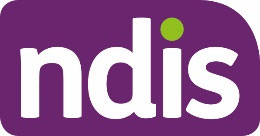 OFFICIAL
OFFICIAL
FOI 24/25-0141
SGP Knowledge Article Template
For Internal Use Only
Understand capacity building supports
What is functional capacity?
Functional capacity is the ability to carry out tasks in a variety of everyday situations.
When we look to build a person’s capacity, we focus on how they can pursue their goals and
develop their skills, such as:
self-care
communication
household
contribution
community
involvement
Why are capacity building supports important?
Capacity building supports help a participant build their skills and maximise independence and
participation. This helps them to pursue their goals and may reduce their dependence on the
NDIS over time.
We consider funding capacity building supports to be an early investment. This is one of the
NDIS principles.
Learn more in Our Guidelines - What principles do we follow to create your plan?
A participant can also get funding for capacity building supports from:
another government scheme, such as a motor vehicle or a workers compensation
scheme
compensation or lump sum payment from a judgement or settlement for their
disability or impairment.
Record capacity building information
Ask the person the
Capacity Building questions in the
Personal and Environmental
Circumstances case and record their answer.
Note:
Don’t read the response options to the person out loud. Listen carefully to their
answers. You may need to select the most appropriate response for each question.
Use your interpersonal skills in a guided conversation to seek answers to each question.
Explain to the person we need the right information
before we make an eligibility decision.
You
must record a response for each mandatory field marked with an asterisk. Then select
Next to continue.
V6.0 2023-12-14
Record information for Capacity Building
Page 2 of 32
This document is uncontrolled when printed
OFFICIAL
Page 60 of 68
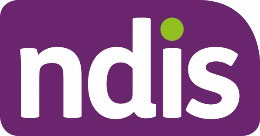 OFFICIAL
OFFICIAL
FOI 24/25-0141
SGP Knowledge Article Template
For Internal Use Only
Note: The PEC case
Steps and questions are dynamic and may change. This will depend on
the person’s situation and age, as well as the response options selected for some questions.
Next steps
1. Read article Record Employment and Training information
2. Read article Record Equipment and Consumables information.
Version control
Version Amended
Brief Description of Change
Status
Date
by
1.0
EMN960 Director review and approval
APPROVED
2022-11-07
2.0
EMN960 Director approved. Minor language updates
APPROVED 2023-02-16
to align with the personal and environmental
circumstances case. Updates to the capacity
building questions.
3.0
JJO192
Revised for staff experience common
APPROVED 2023-03-17
capabilities micro-release
4.0
EMN960 EL2 Approval to publish
APPROVED
2023-06-21
5.0
EMN960 EL2 Review and approval to QA and publish
APPROVED
2023-12-11
6.0
EMN960 EL2 Review and approval to publish
APPROVED
2023-12-14
V6.0 2023-12-14
Record information for Capacity Building
Page 3 of 32
This document is uncontrolled when printed
OFFICIAL
Page 61 of 68
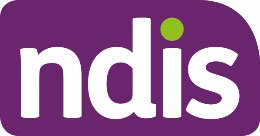 DOCUMENT 11
OFFICIAL
DOCUMENT 11
OFFICIAL
FOI 24/25-0141
SGP Knowledge Article Template
For Internal Use Only
The contents of this document are OFFICIAL.
Record employment and training information
This article provides guidance for a
local area coordinator, early childhood partner and
all
NDIA staff (planner, payment officer, internal review officer, complaints officer,
participant service officer, access officer, quality officer, technical advisor, SDA officer,
NCC officer, provider support) to:
understand work and study supports
record work and study supports in a Personal and Environmental Circumstance
(PEC) case.
Recent updates
December 2023
Updates to work and study supports, including:
updated links to the Our Guidelines – Work and study and new article Understand
work and study supports.
Before you start
You have read and understood:
Our Guideline – Work and study (external)
article
Understand work and study supports
article
Complete personal and environmental circumstances case
article
Create Personal and Environmental Circumstances case
Guide - Conversation style guide.
Understand work and study supports
Work and study are an important part of life for most people. If an NDIS participant wants to
work or study, we want to support them. We can fund work and study supports for the
participants disability-related needs. All NDIS funded supports must meet the NDIS funding
criteria (external). To access work and study funded supports, a participant will have a work or
V4.0 2023-11-23 WP17B19j-28 Record employment and training information
Page 1 of 3
This document is uncontrolled when printed
OFFICIAL
Page 62 of 68
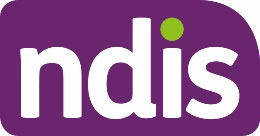 OFFICIAL
OFFICIAL
FOI 24/25-0141
SGP Knowledge Article Template
For Internal Use Only
study goal in their NDIS plan. To learn more about work and study supports, go to article
Understand work and study supports.
When will we fund work and study supports?
When we think about what work or study supports we can fund, we'll consider if it:
relates to the person’s disability
helps the person pursue their goals
is effective and beneficial for the person
is legal and safe
is value for money
is something we don’t expect informal supports or the community to provide
is funded or provided by another program or service.
The Let’s talk about work booklet (external) will help the participant get ready to think and talk
about work.
We might not be able to fund all the supports a participant needs for work and study. Some
supports might not meet our NDIS funding criteria (external). Some supports might be better
funded or provided through:
other mainstream services. For more information, go to Our Guideline - Mainstream
and community supports
government programs, such as Disability Employment Services (DES) or JobAccess
Department of Employment and Workplace Relations
other government departments, like your state or territory government
school, university or TAFE
a business or employer.
Record work and study supports in a Personal and
Environmental Circumstance (PEC) case
We complete the
Personal and Environmental Circumstances (PEC) case when a person
is applying to the NDIS. Completing the questions in the PEC case helps us to understand:
the person’s support needs
how the person manages daily life.
V4.0 2023-11-23 WP17B19j-28 Record employment and training information
Page 2 of 3
This document is uncontrolled when printed
OFFICIAL
Page 63 of 68
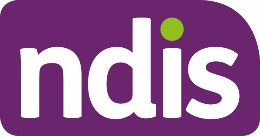 OFFICIAL
OFFICIAL
FOI 24/25-0141
SGP Knowledge Article Template
For Internal Use Only
Ask the person the employment and training questions in the PEC case and record their
answers.
Note: Don’t read
the response options to the person out loud. Instead, listen carefully to their
answers. You may need to select the most appropriate response for each question.
Use your interpersonal skills in a guided conversation to seek answers to each question.
Explain to the person we need the right information before we make an eligibility decision.
You must record a response for each mandatory field marked with an asterisk. Then select
Next to continue.
Note: The PEC case
Steps and questions are dynamic and may change depending on the
person’s circumstances and age, as well as the response options selected for some questions.
Next steps
Read article Record Equipment and Consumables information
Version control
Version Amended
Brief Description of Change
Status
Date
by
1.0 EMN960
Director review and approval
APPROVED
2022-11-08
2.0 JS0082
Director review and approval
APPROVED
2023-01-17
3.0 EMN960
Director Approval with no feedback from
APPROVED
2023-06-21
Partners and SD
4.0
ED0024 Class 1 approval
APPROVED 2023-11-23
Updates to work and study content and
new article. Update OG links to national.
V4.0 2023-11-23 WP17B19j-28 Record employment and training information
Page 3 of 3
This document is uncontrolled when printed
OFFICIAL
Page 64 of 68
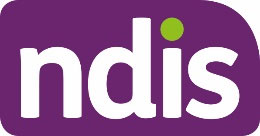 OFFICIAL
OFFICIAL
FOI 24/25-0141
DOCUMENT 12
SGP Knowledge Article Template
For Internal Use Only
The contents of this document are OFFICIAL.
Understand functional capacity assessments
This article provides guidance for a
local area coordinator, early childhood coordinator and all NDIA staff (
planner, payment officer, internal review officer, complaints officer,
participant service officer, access officer, quality officer, technical advisor, SDA officer,
NCC officer, provider support) to understand:
a functional capacity assessment
the purpose of a functional capacity assessment
the difference between a new and manual assessment
what to do before completing a new assessment
completing a new assessment.
Recent updates
Date
What’s changed
June 2023
Updated definition and purpose of functional capacity assessments
Understand and record a functional capacity assessment
Understand functional capacity assessments
A functional capacity assessment is how we assess the impact a person’s disability or a child’s
developmental delay has on their daily activities. Depending on their developmental delay or
disability, the type of functional capacity assessment that we complete may vary.
The purpose of a functional capacity assessment
Functional capacity assessments are a form of evidence. We use them to understand the
needs of a person. We complete this assessment to:
help us identify the level of support and funding they will need in their plan
understand how they manage everyday activities
assist us in making decisions.
V4.0 2023-06-16
WP17B.19j-09 - 191424770
Page 1 of 4
This document is uncontrolled when printed
OFFICIAL
Page 65 of 68
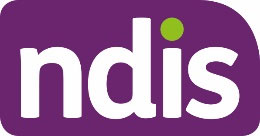 OFFICIAL
OFFICIAL
FOI 24/25-0141
SGP Knowledge Article Template
For Internal Use Only
Partners can also use this information to understand the person’s situation. This helps them to
support the person to connect with the right supports.
New assessment and manual assessment
A
new assessment refers to you completing a new PEDI-CAT or WHODAS assessment in
PACE. To learn more, go to articles:
Record assessment – PEDI-CAT
Record assessment – WHODAS.
A
manual assessment refers to any previously completed functional capacity assessments.
For example, a person might give you a report from their doctor. You will enter the scores from
the report in PACE.
The participant, their nominee or child representative, or their treating health professional can
provide the score of an external assessment.
Before completing the assessment
Before completing the assessment, check for any exceptions, including:
if the person does not want to complete assessment
if the person has a priority situation
if there are any identified risks
if they have reapplied within the last 6 months.
When contacting an applicant, participant, their provider, or authorised representative, you
must:
check their preferred communication method and authorisations
log an activity.
Read the articles:
Checking and updating a participant’s preferred communication method
Using the activity panel for logging an activity or internal note.
Complete a new assessment
You need to make the person feel comfortable when communicating. When you are talking to
them face to face or over the phone, make sure you:
V4.0 2023-06-16
WP17B.19j-09 - 191424770
Page 2 of 4
This document is uncontrolled when printed
OFFICIAL
Page 66 of 68
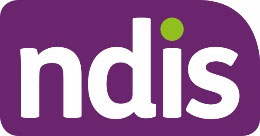 OFFICIAL
OFFICIAL
FOI 24/25-0141
SGP Knowledge Article Template
For Internal Use Only
prepare for the conversation
understand the person-centred approach
understand the question you are asking
tailor wording from assessment questions
build
rapport
actively
listen
manage expectations with the individual that this does not mean they will get a funded
NDIS plan.
For more information, go to the Conversation Style Guide.
To begin a functional capacity assessment, you must create a new
Functional Capacity
Assessment case.
To do this, follow the steps in the article
Create a new functional
capacity assessment case.
Types of functional capacity assessments
There are many types of functional capacity assessments. We use them to help assess the
level of impact a person’s developmental delay or disability has on their lives.
For more information, go to articles:
General
Record information – life skills profile (LSP - 16)
Record assessment – WHODAS
Record assessment – PEDI-CAT
Hearing loss
Record information – Functional Impact of Hearing Loss
Vision loss
Record Information – Functional Impact of Vision Loss
Spinal Injury
Record Information – Level of Lesion
Traumatic brain injury
Record information – The care and needs scale
V4.0 2023-06-16
WP17B.19j-09 - 191424770
Page 3 of 4
This document is uncontrolled when printed
OFFICIAL
Page 67 of 68
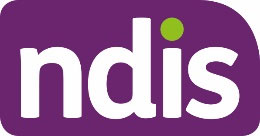 OFFICIAL
OFFICIAL
FOI 24/25-0141
SGP Knowledge Article Template
For Internal Use Only
Intellectual and development disability
Record information – Vineland
Record information from the DSM5 – Autism
Record information from the DSM5 – intellectual disability
Cerebral palsy
Record gross motor functional classification scale
Record information – Manual Ability Classification System.
Record a communication function classification score
Multiple Sclerosis
Record information – Disease Steps assessment
Record information – Expanded Disability Status Scale
Stroke / Neurological disability
Record information – Modified Rankin Scale
Next steps
1.
Read the article,
Create a new functional capacity assessment case.
Version control
Version Amended
Brief Description of Change
Status
Date
by
1.0
EMN960 Director approval
APPROVED
2022-10-31
2.0
Confluence
download
3.0 EMN960
Director approval
APPROVED
2023-06-09
4.0 EMN960
Director approval
APPROVED 2023-06-16
V4.0 2023-06-16
WP17B.19j-09 - 191424770
Page 4 of 4
This document is uncontrolled when printed
OFFICIAL
Page 68 of 68














































